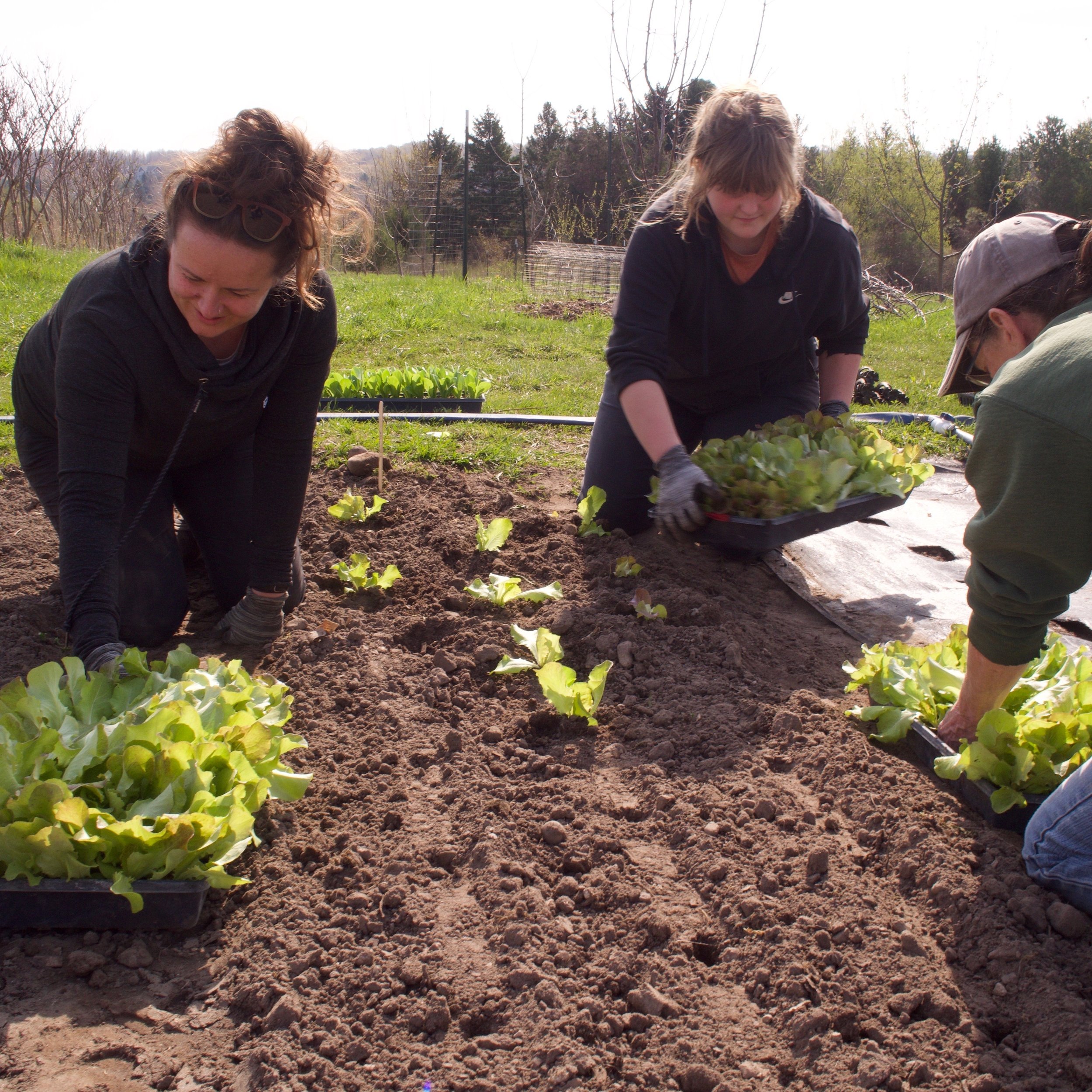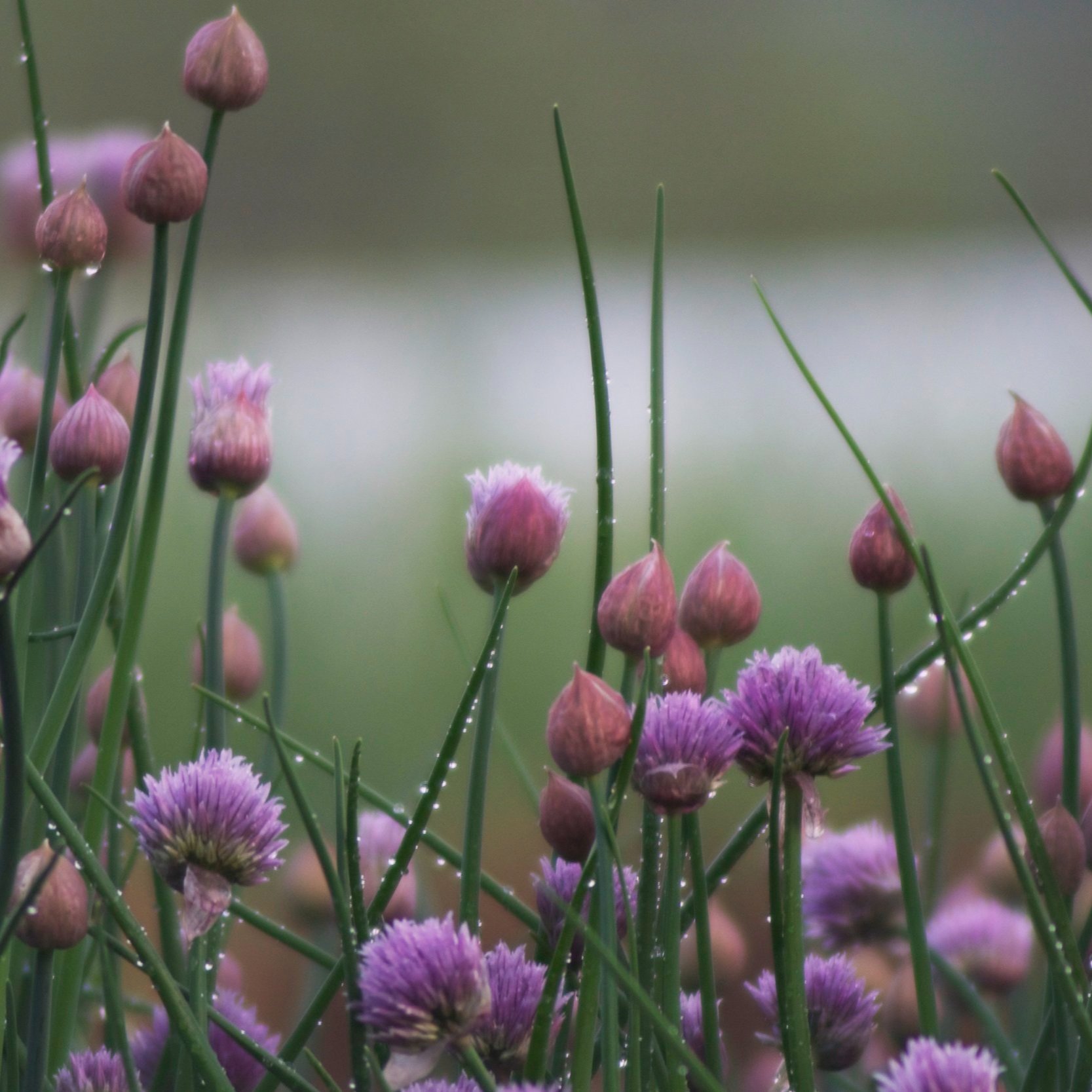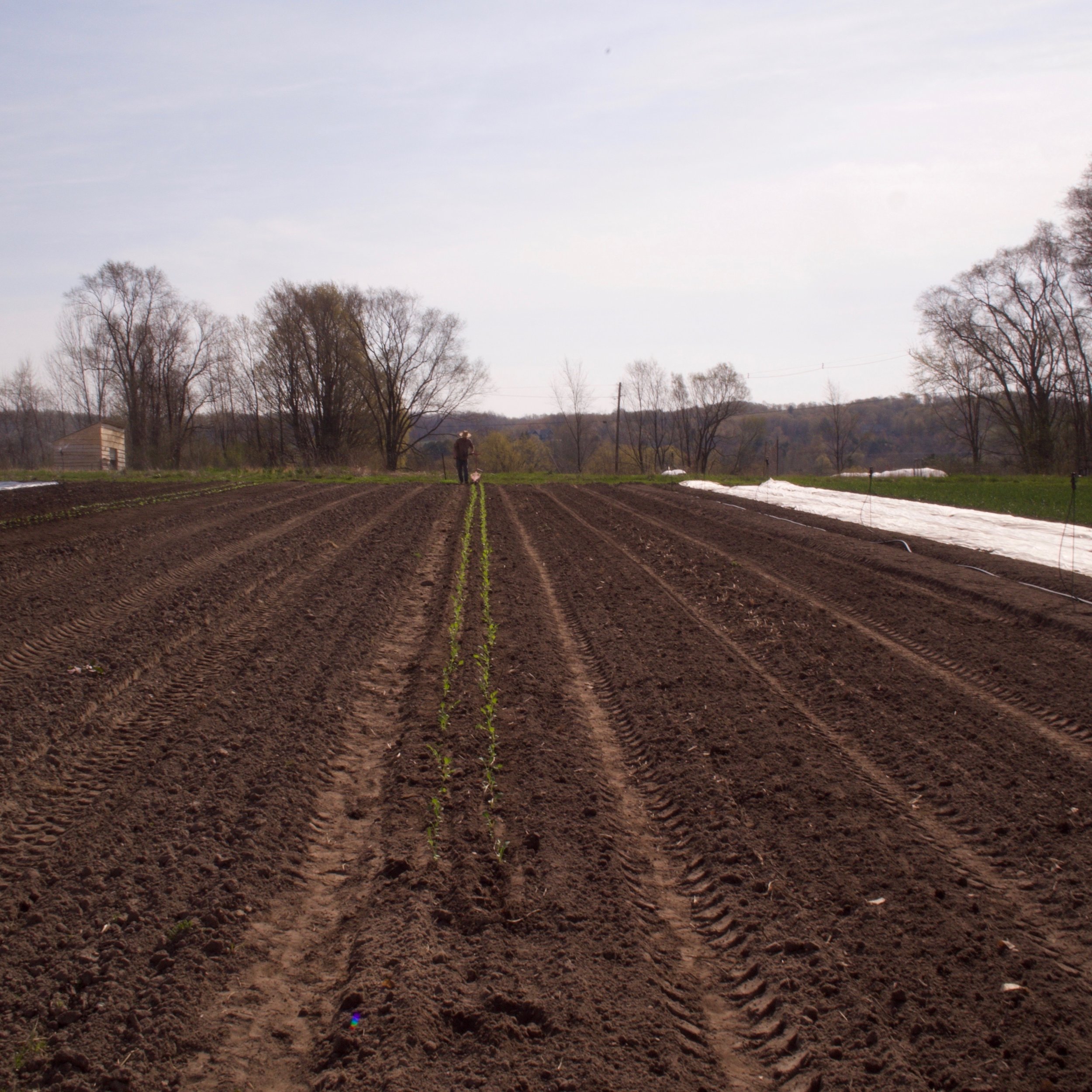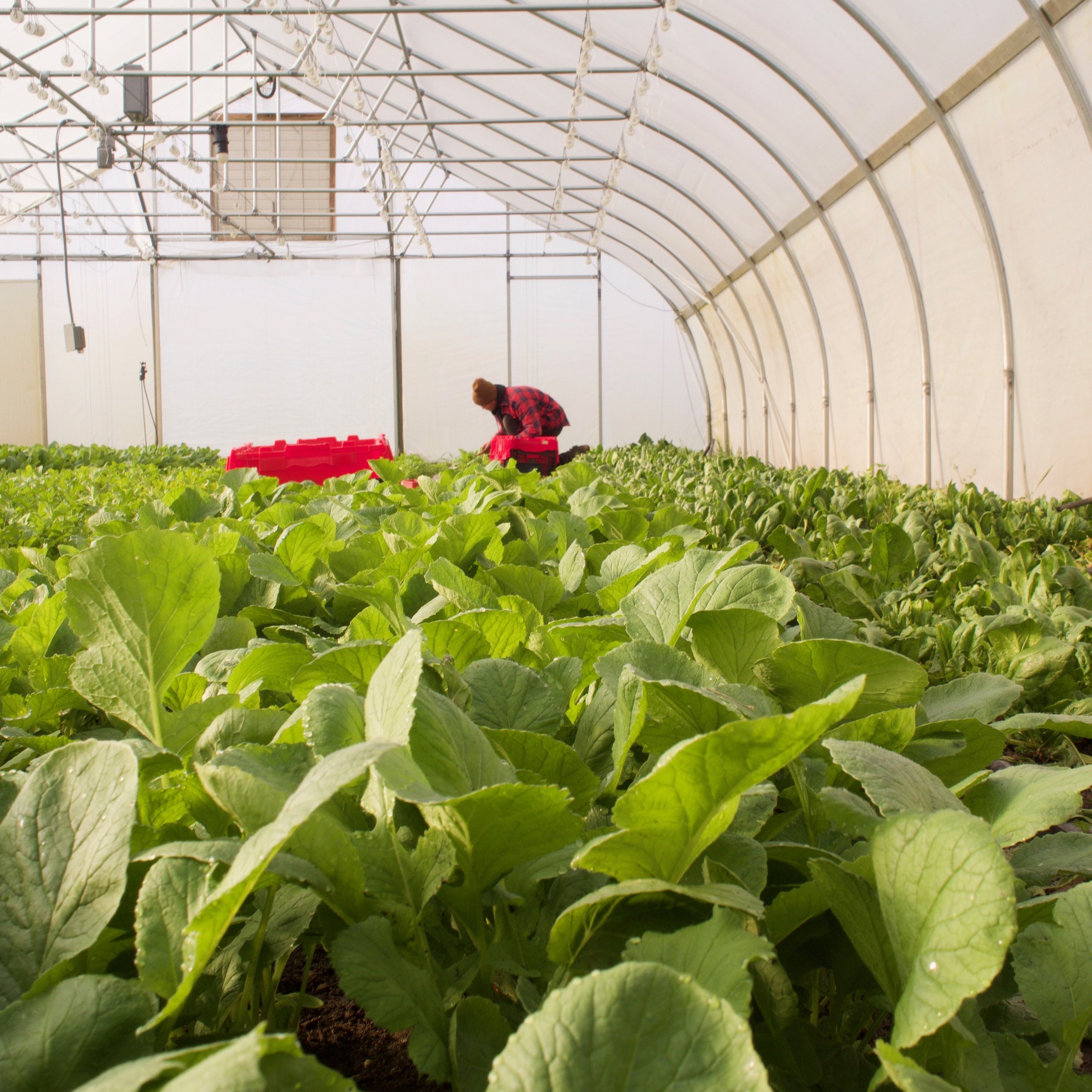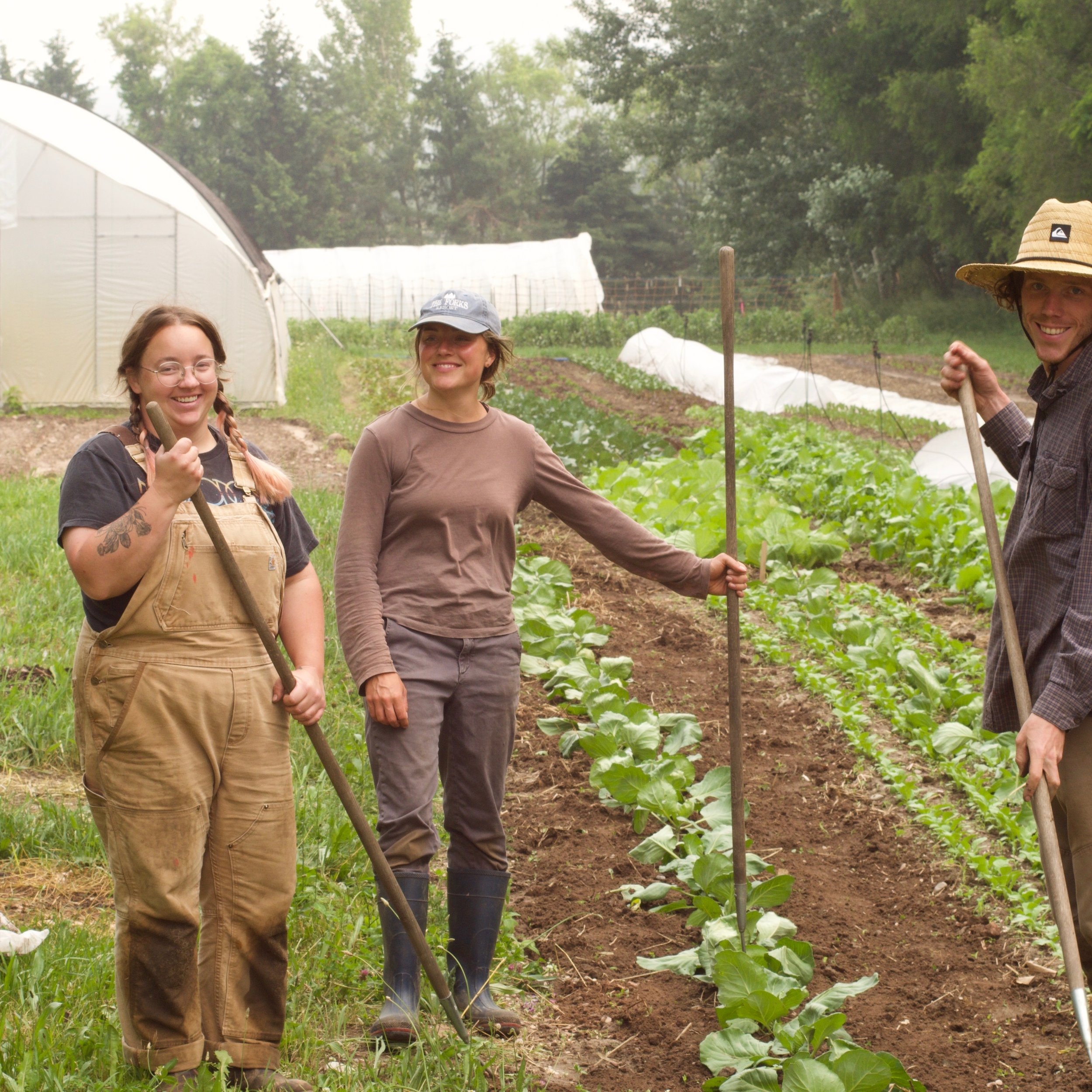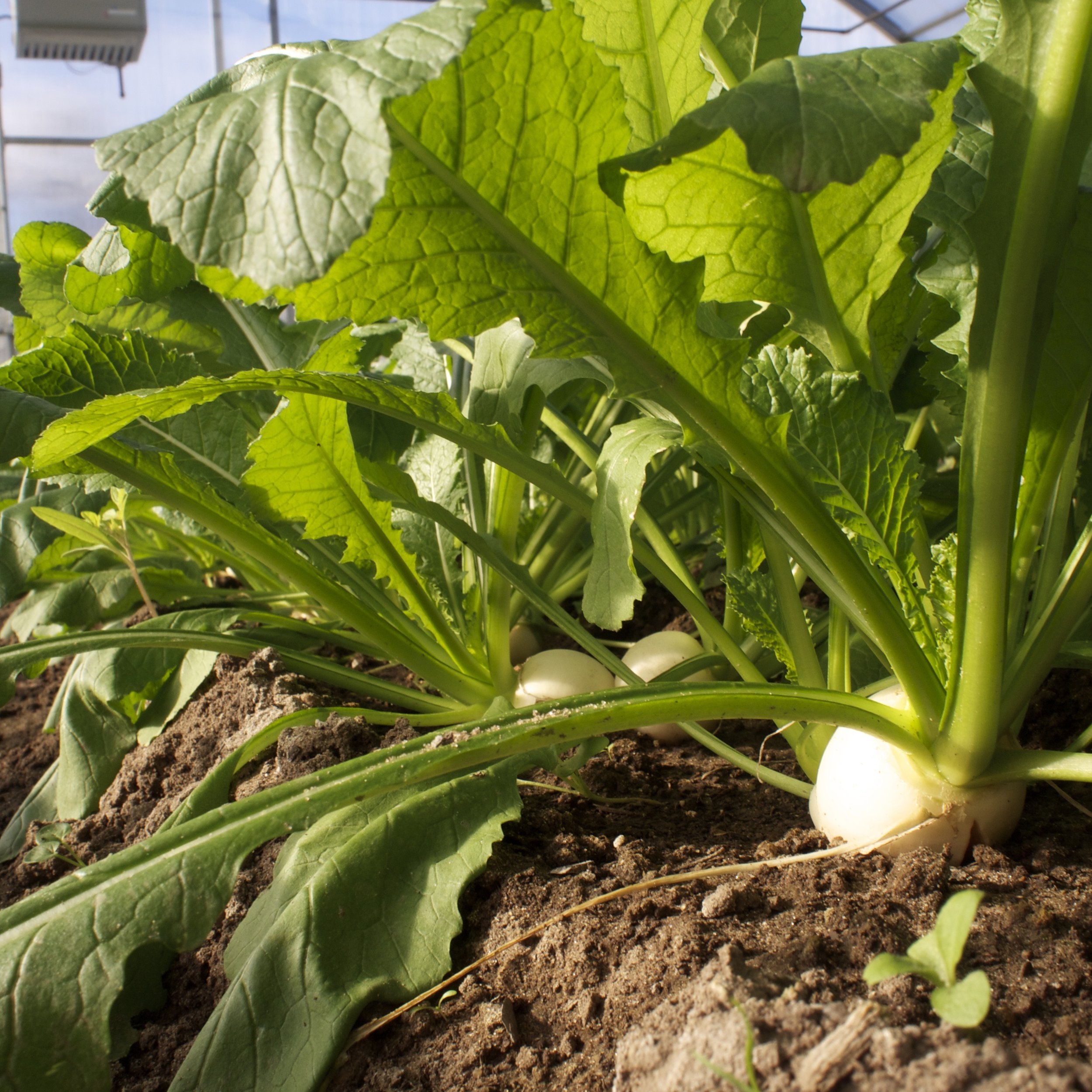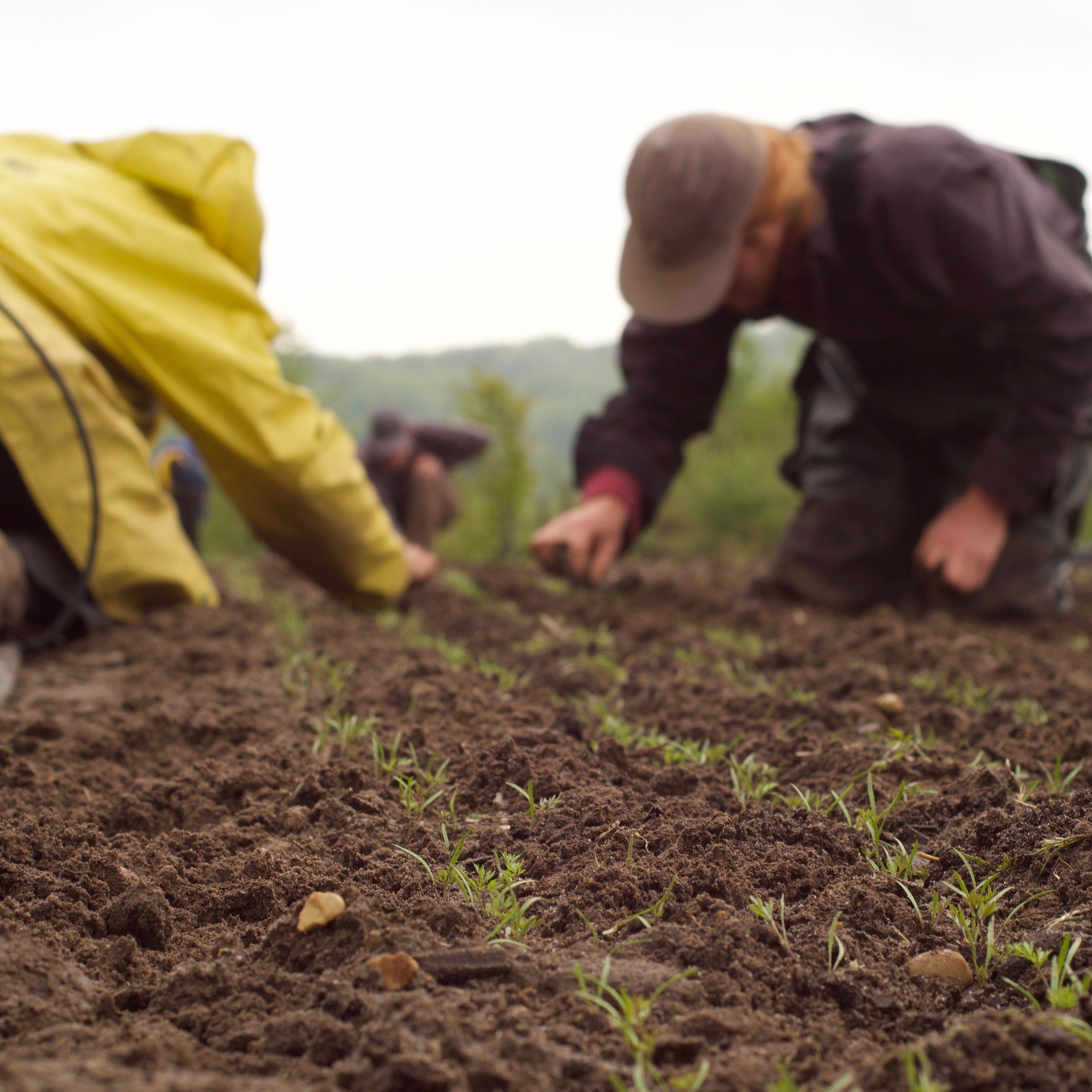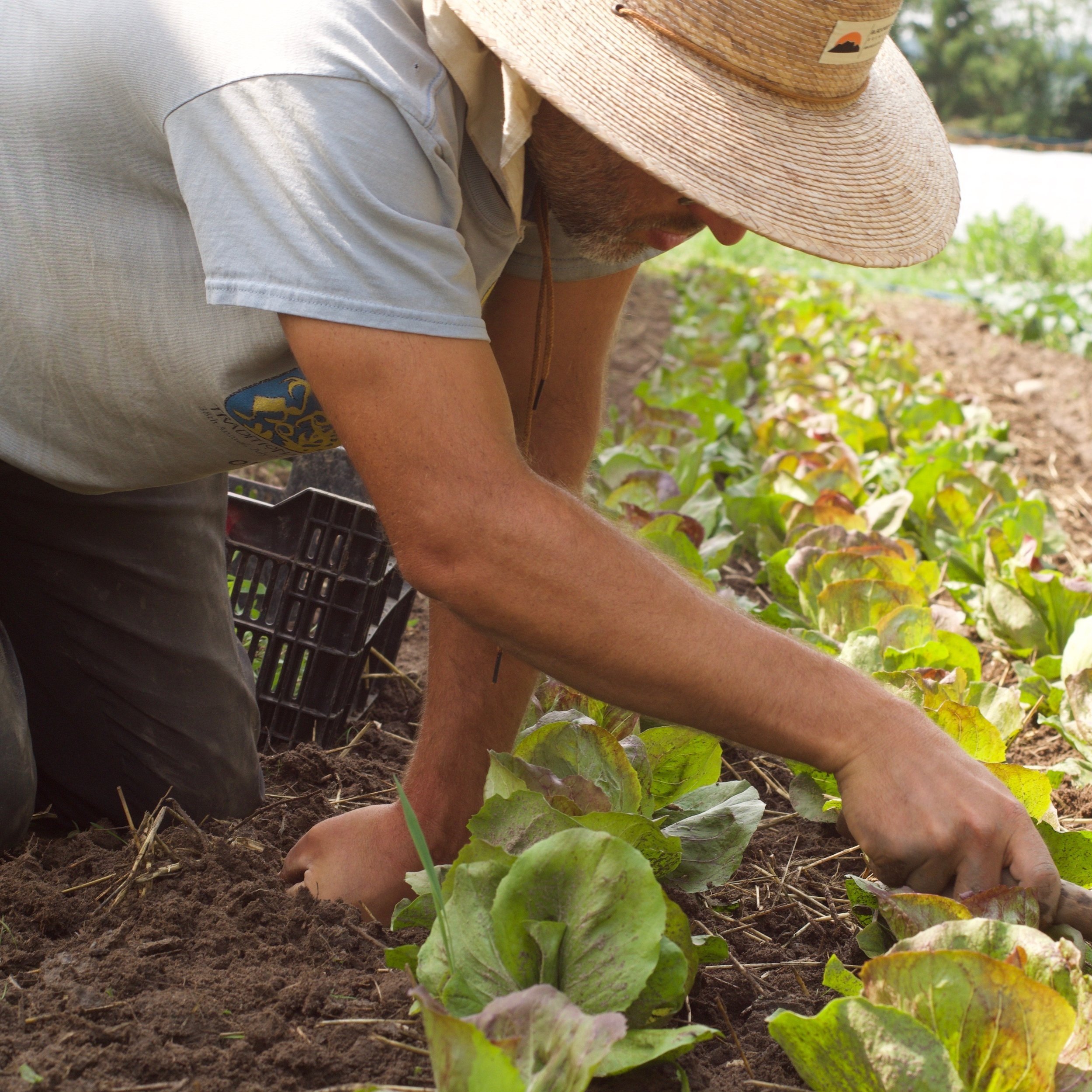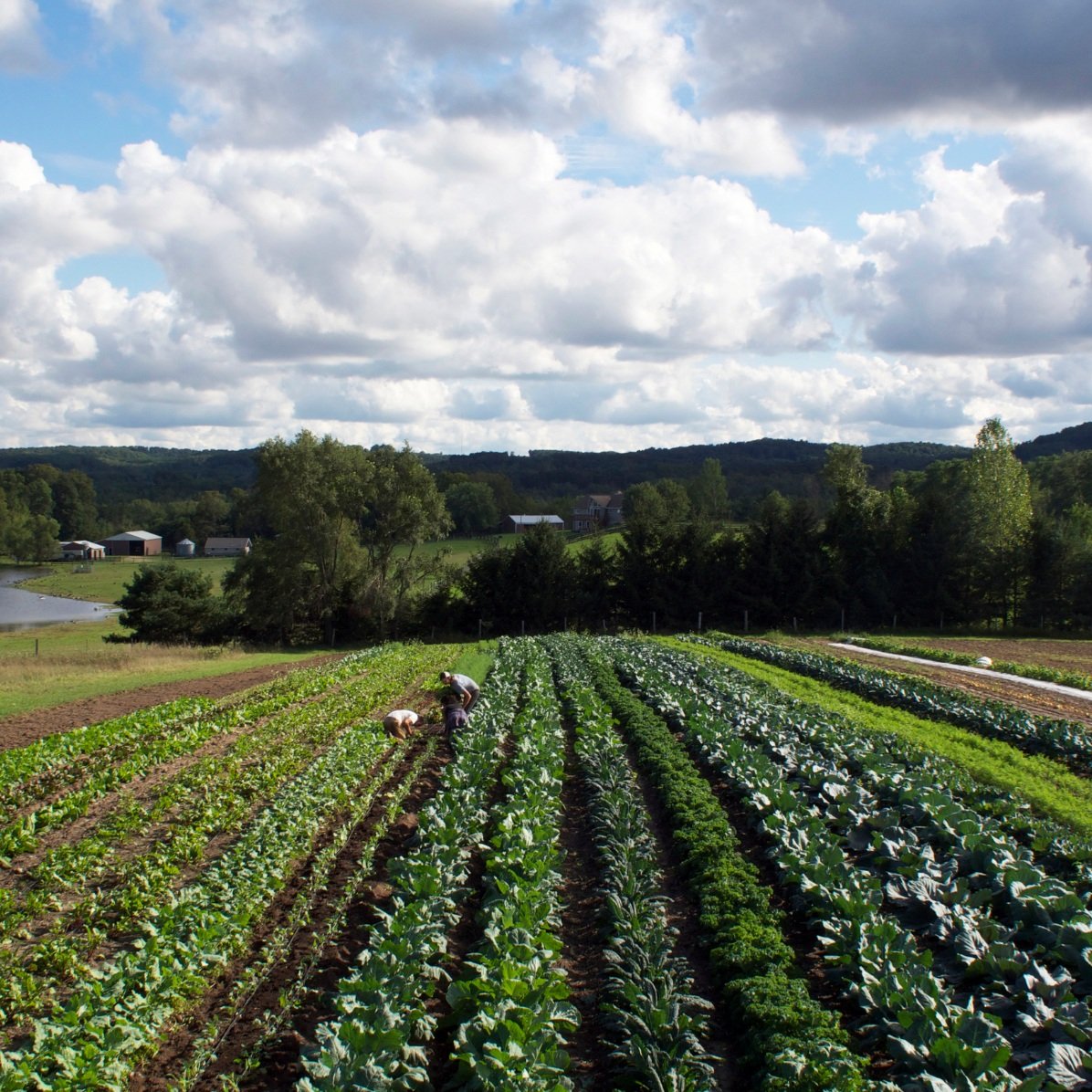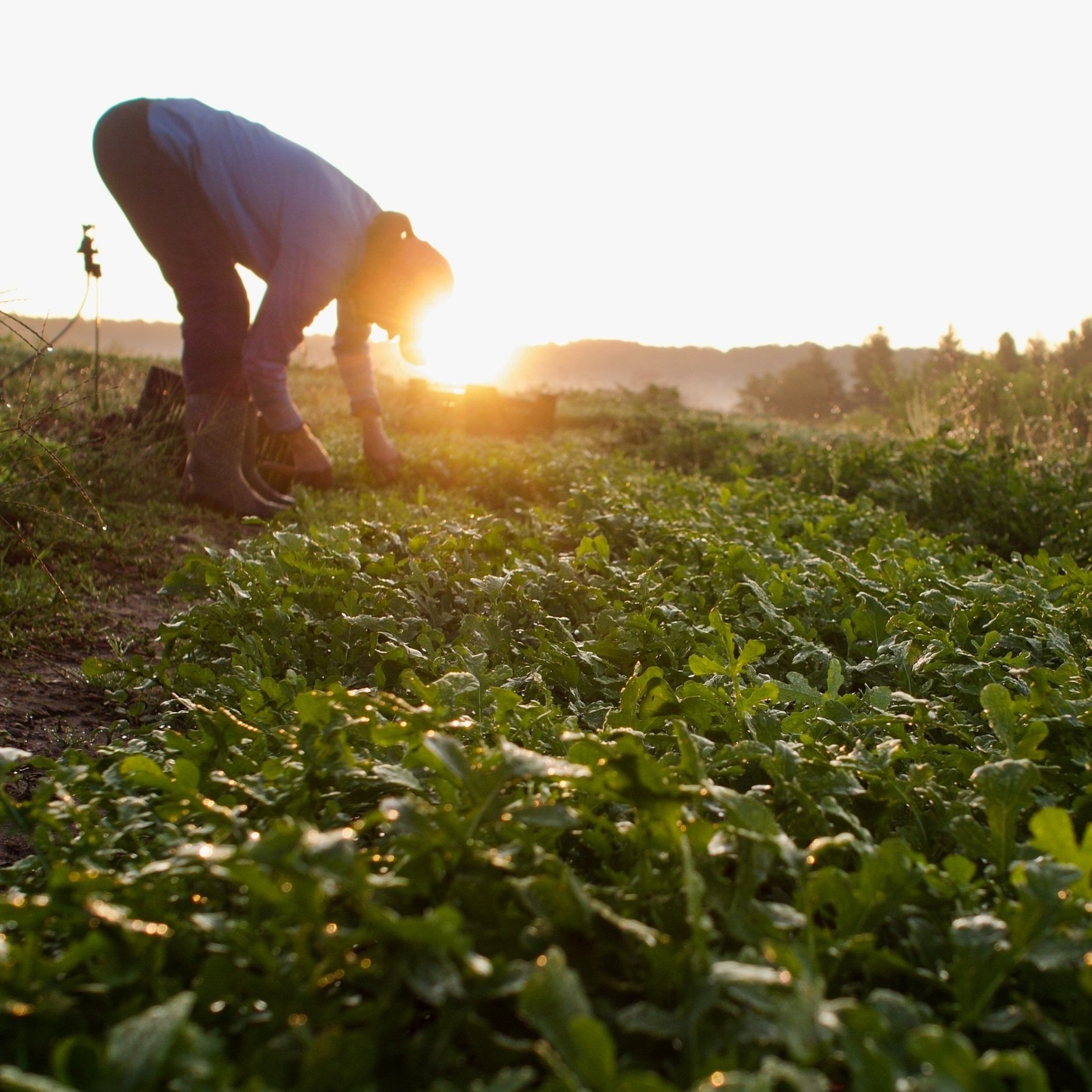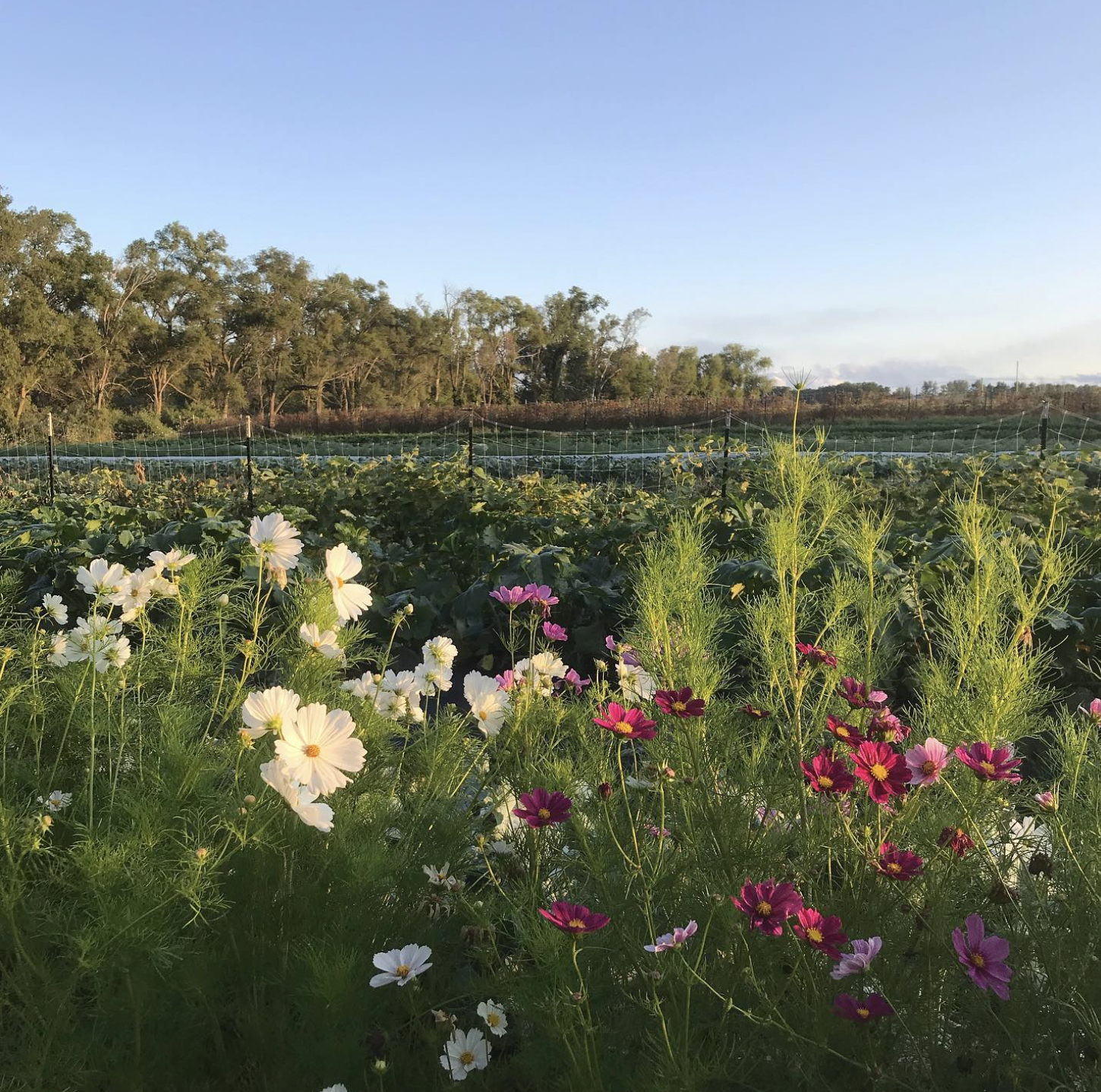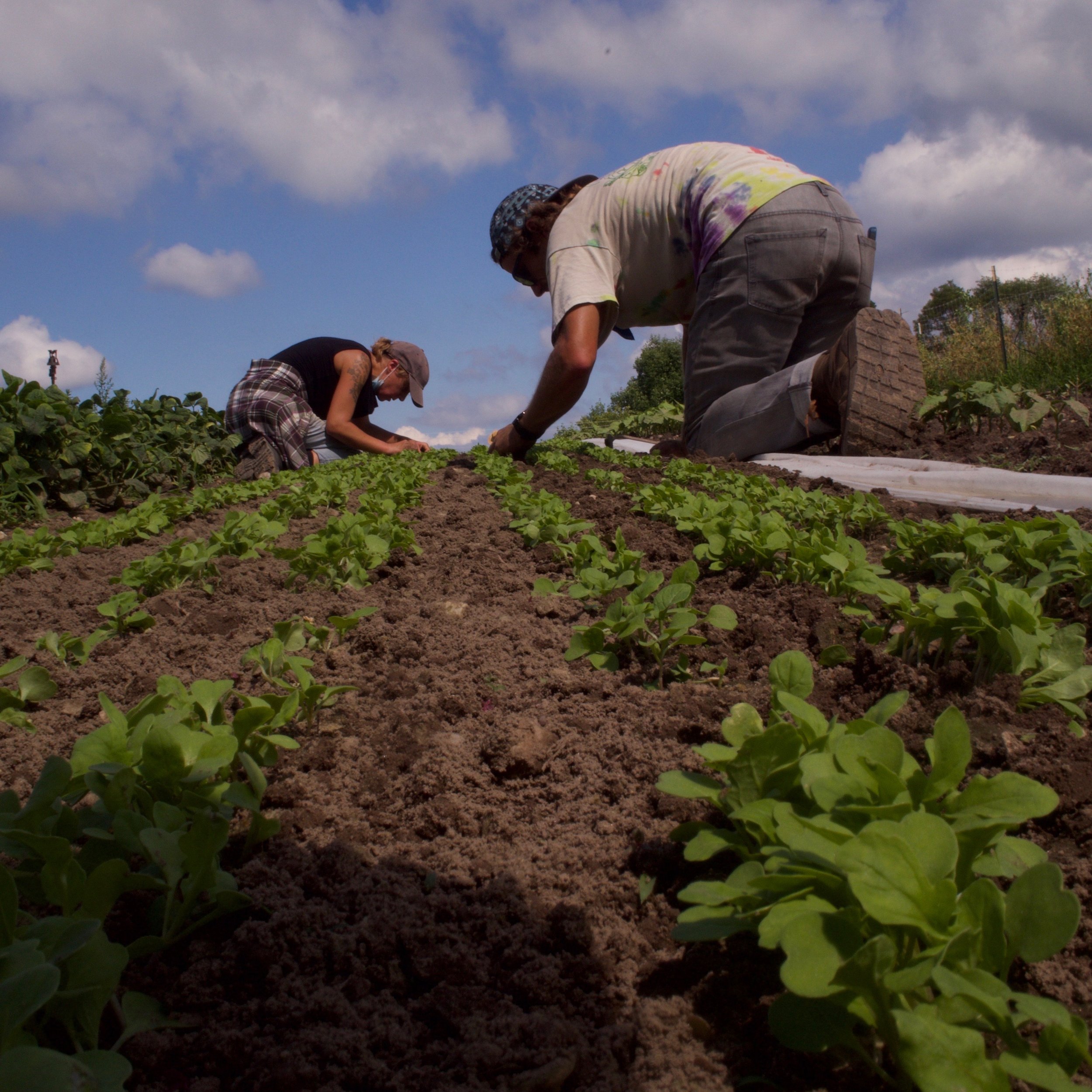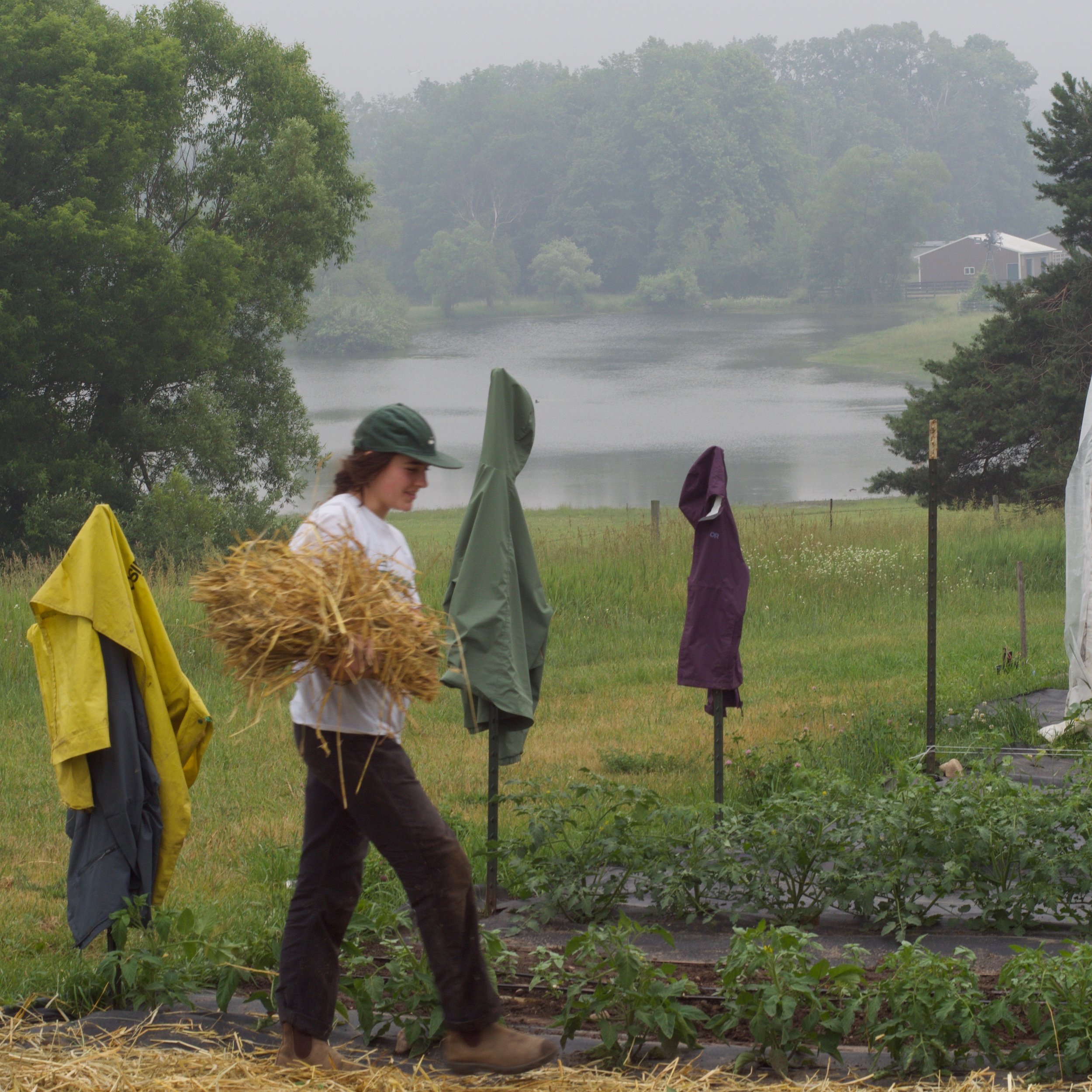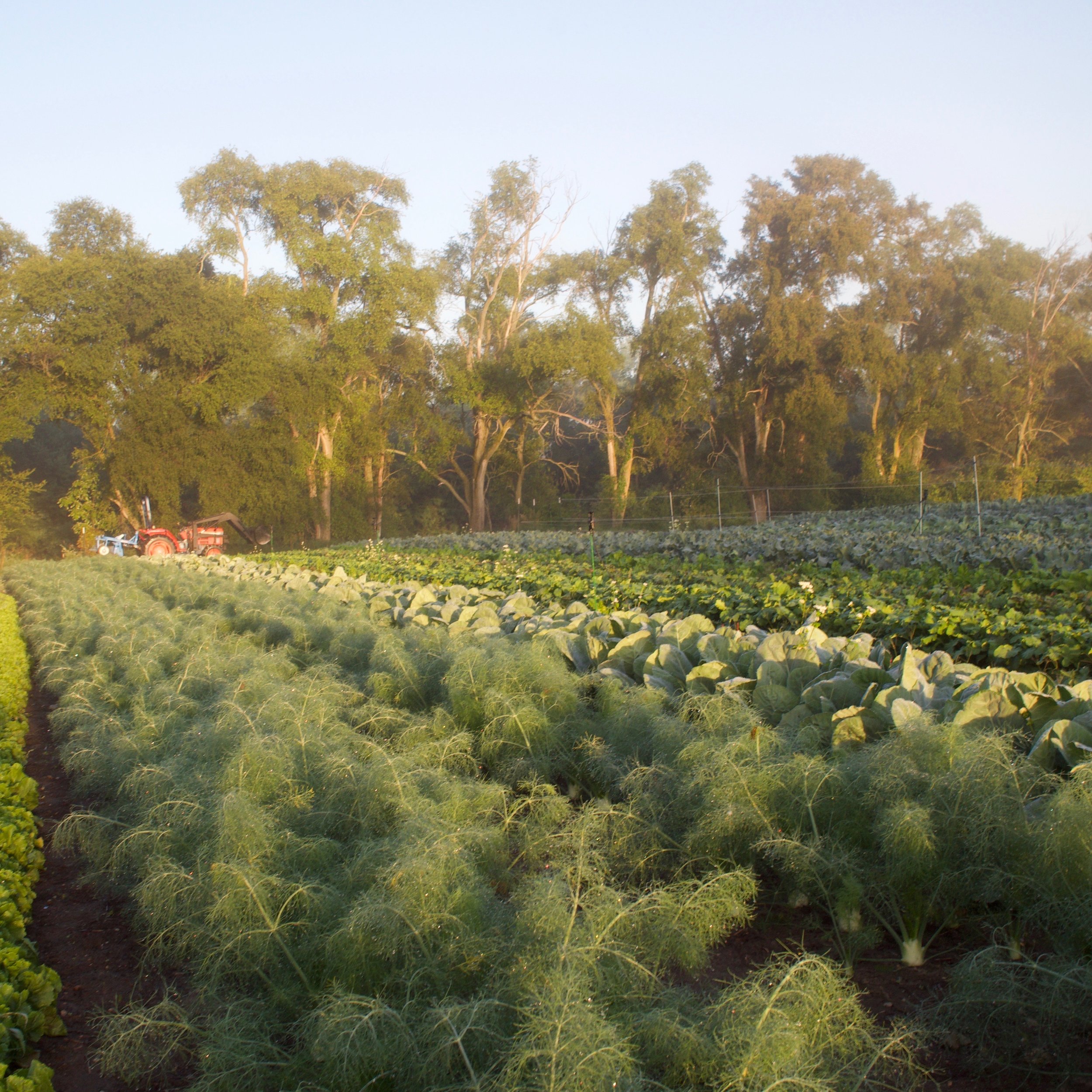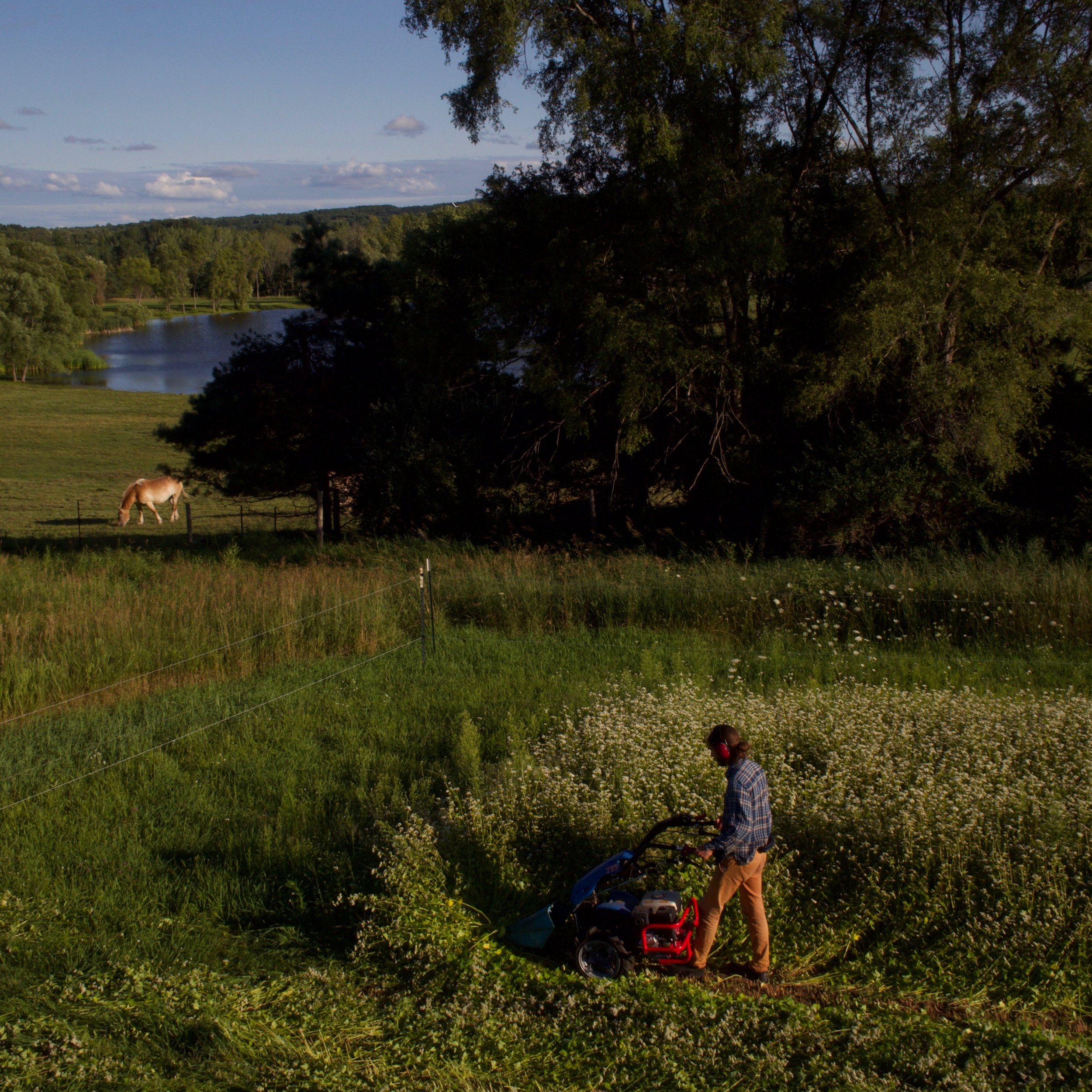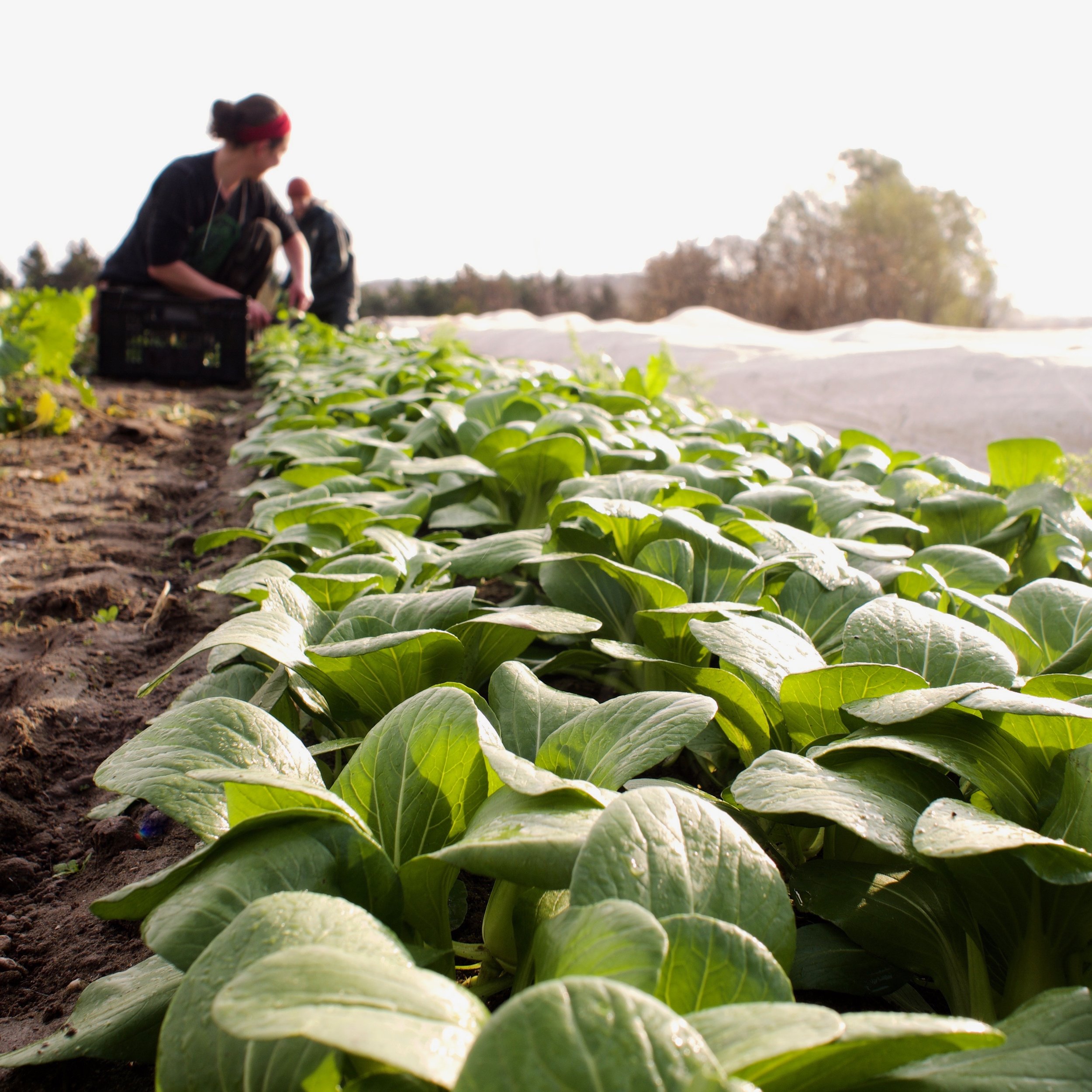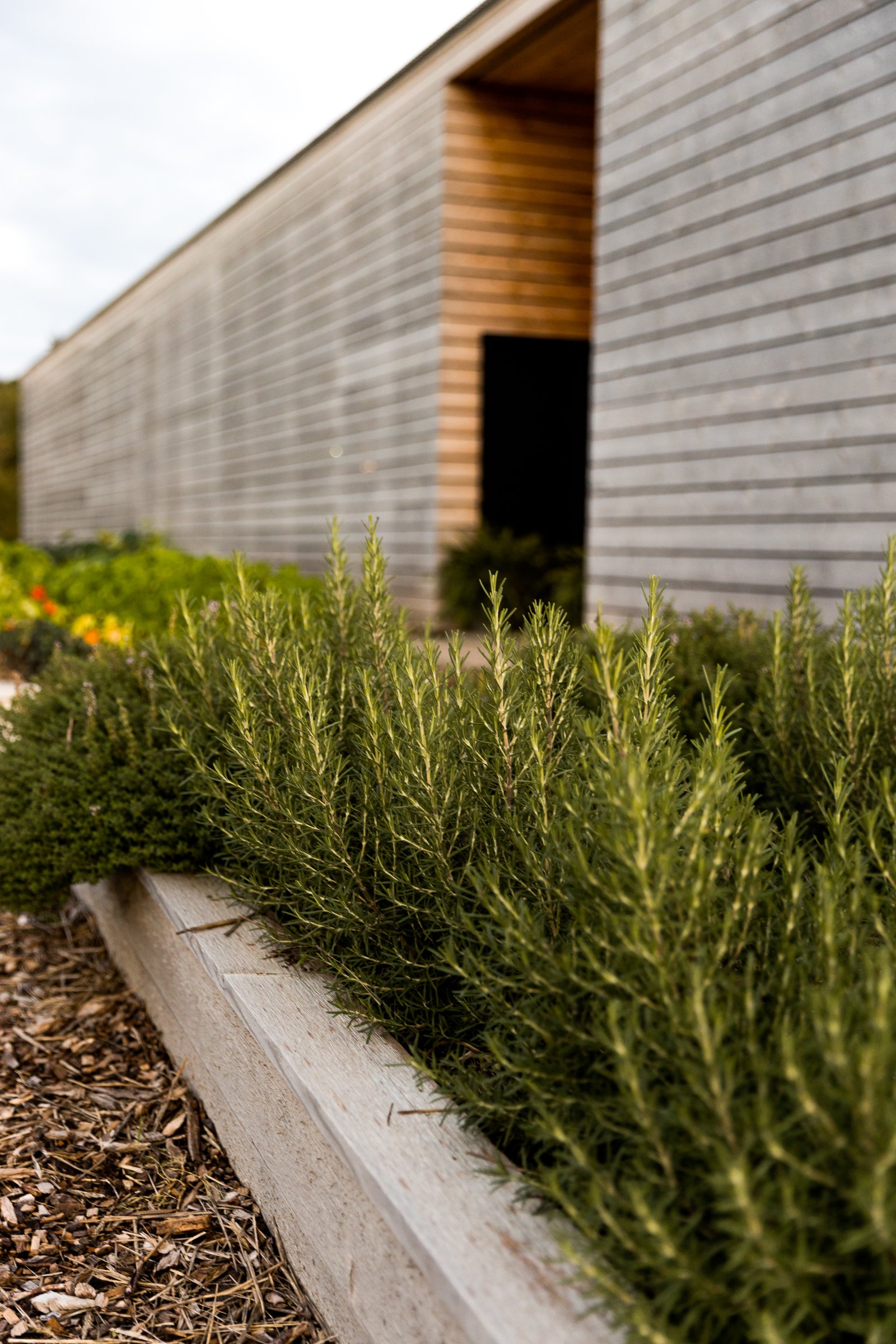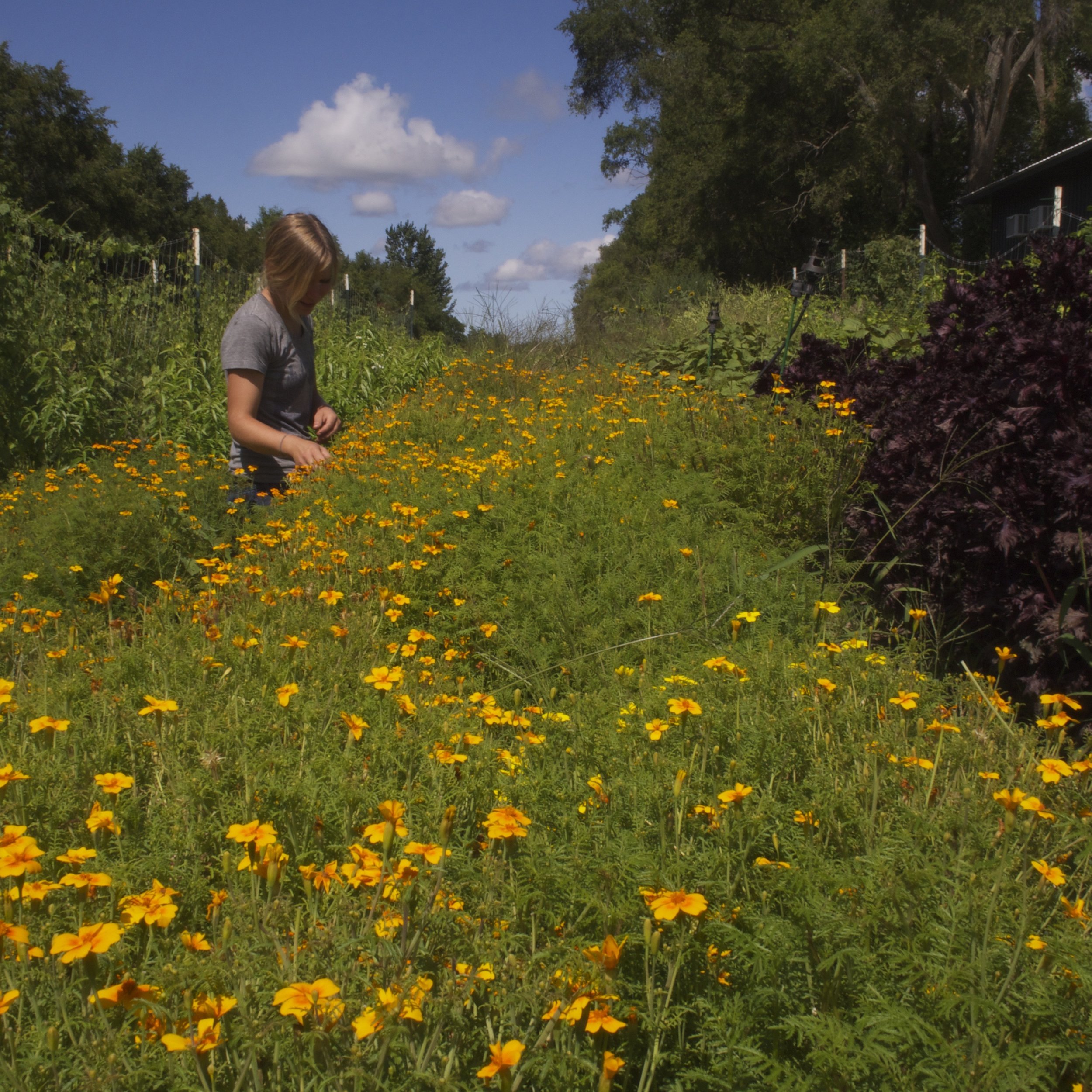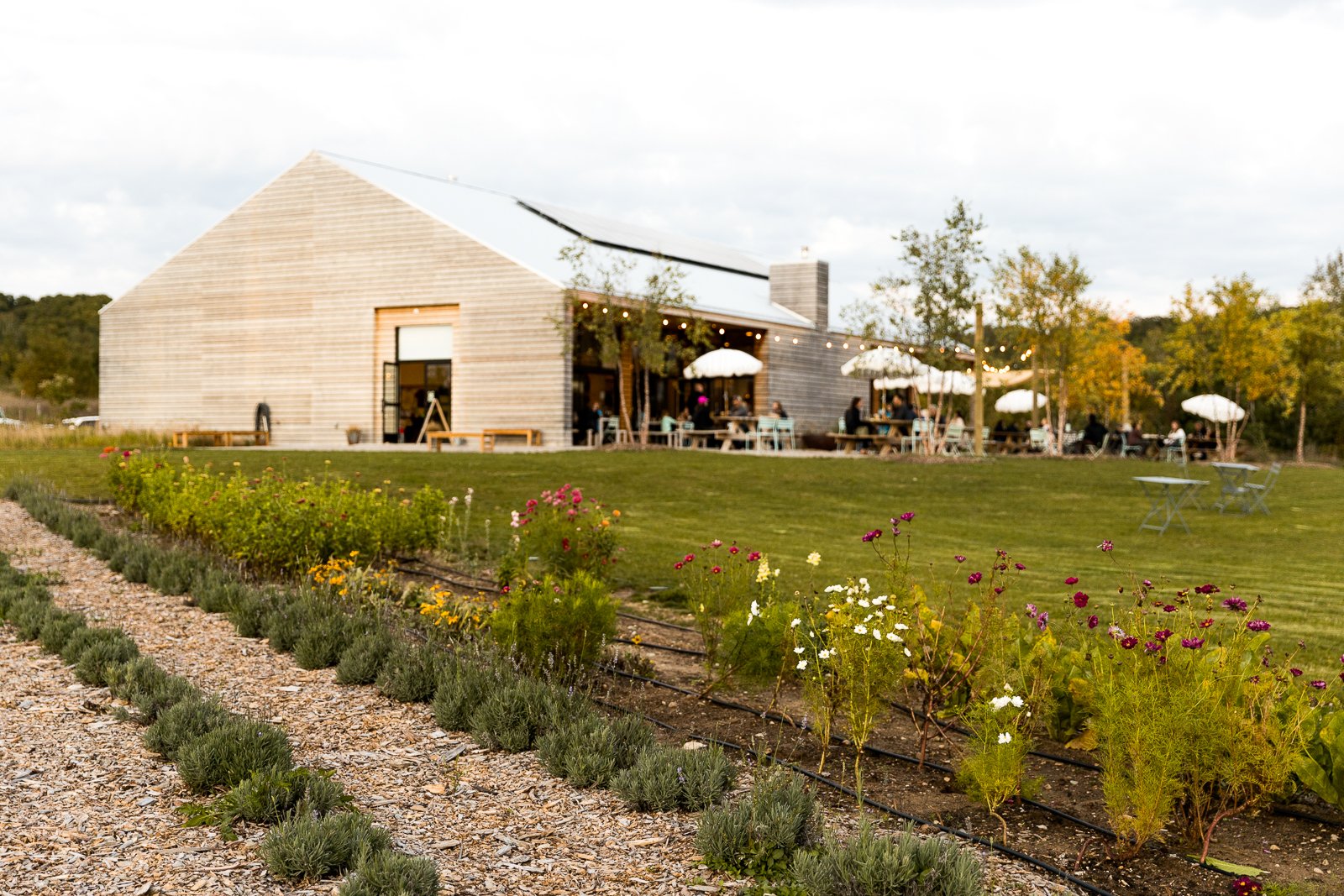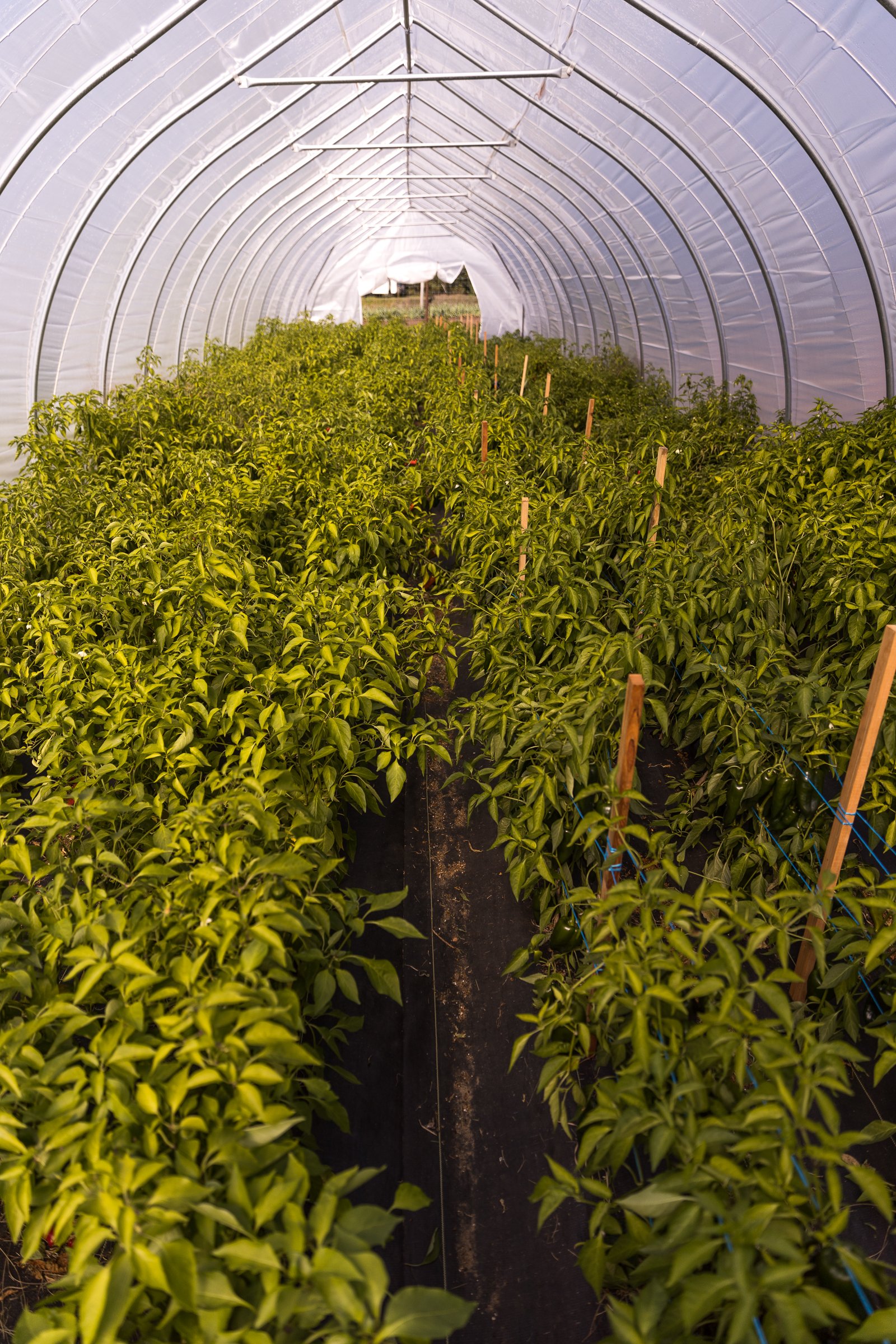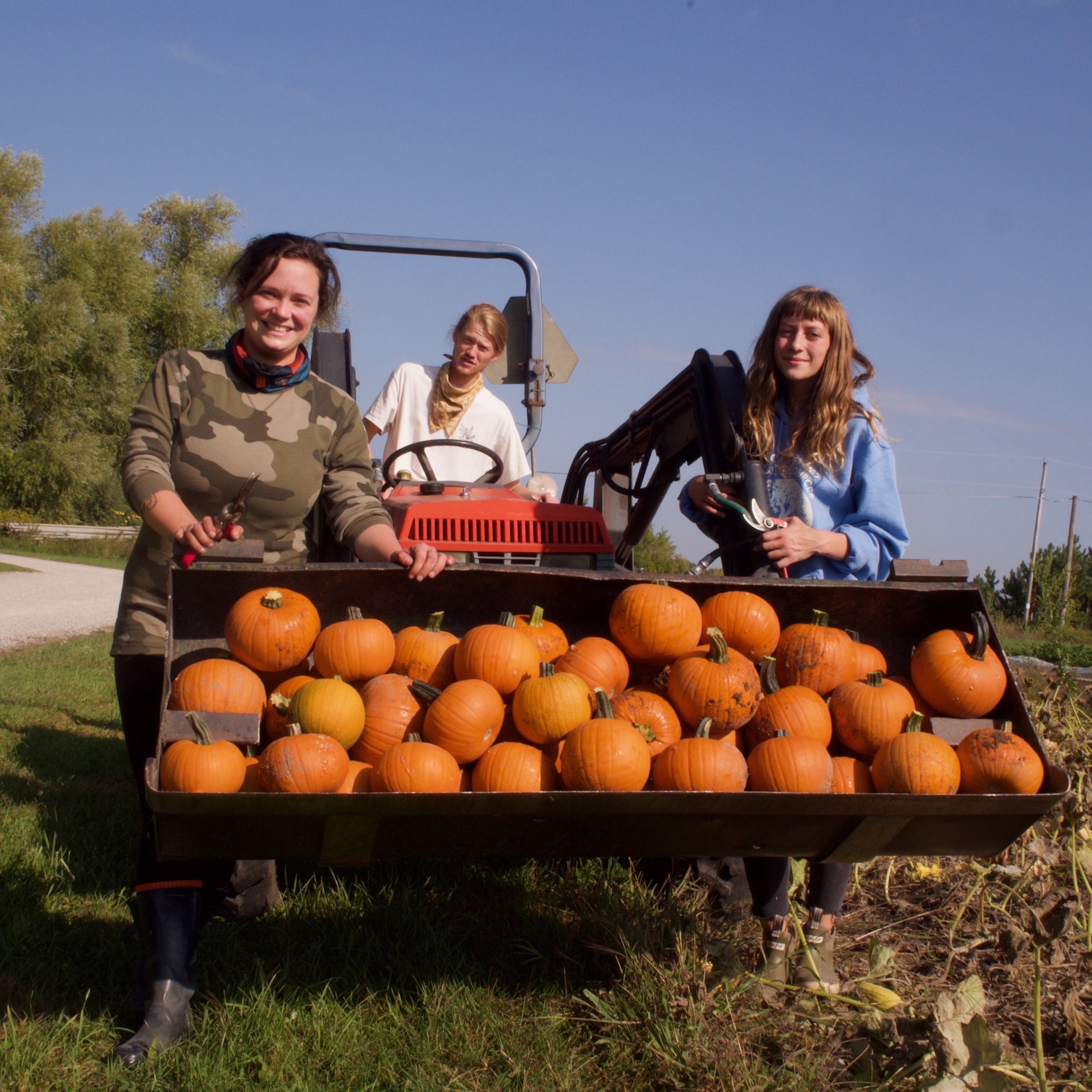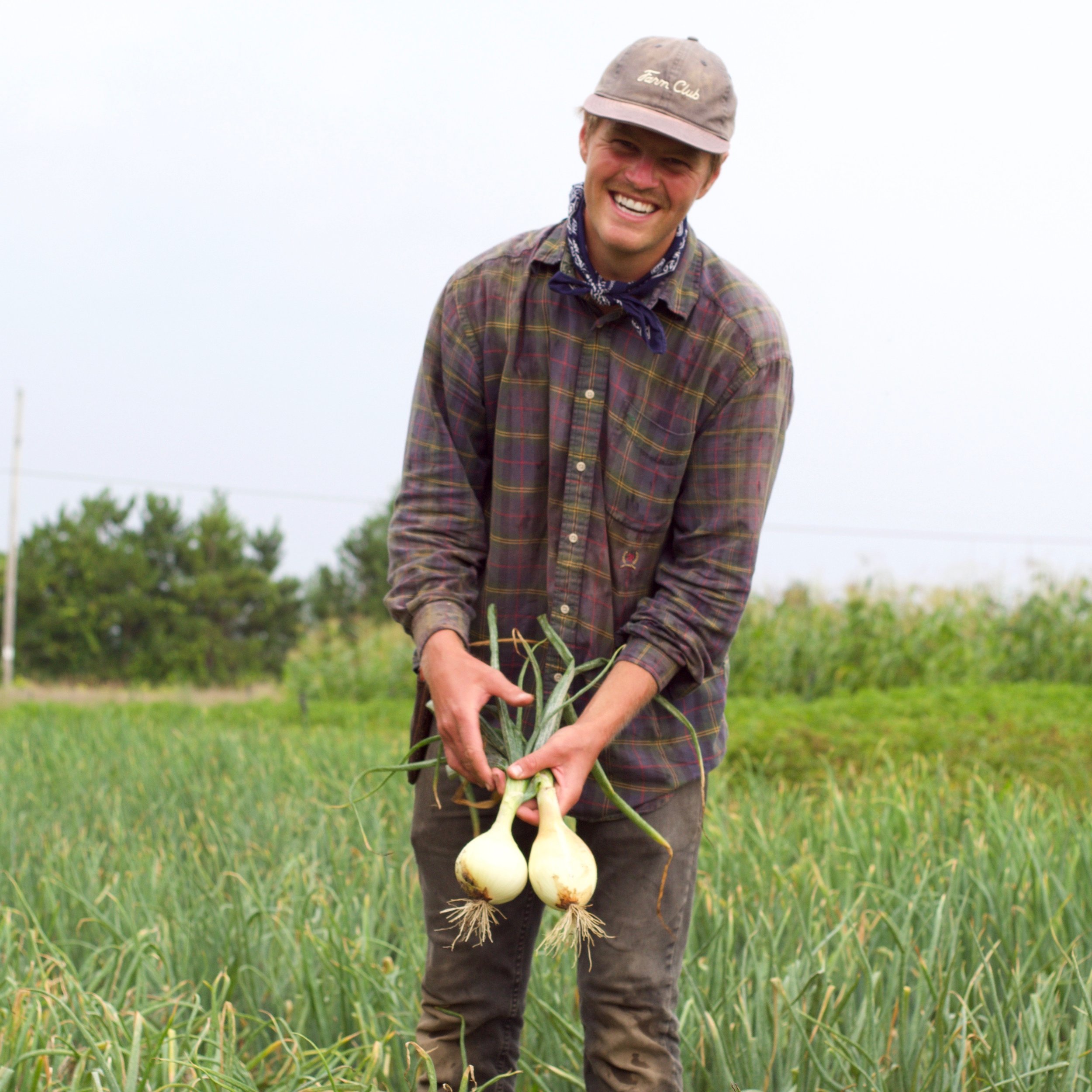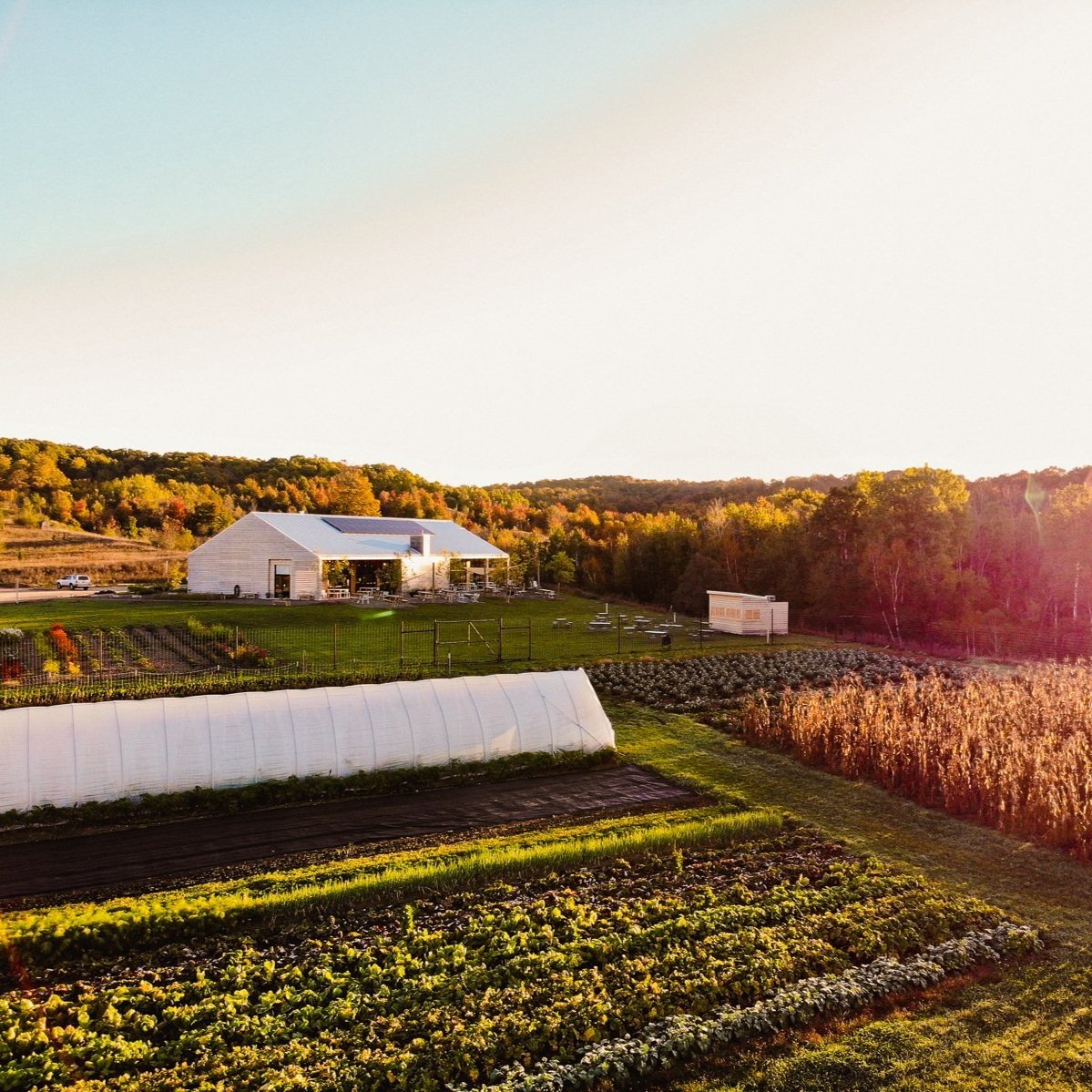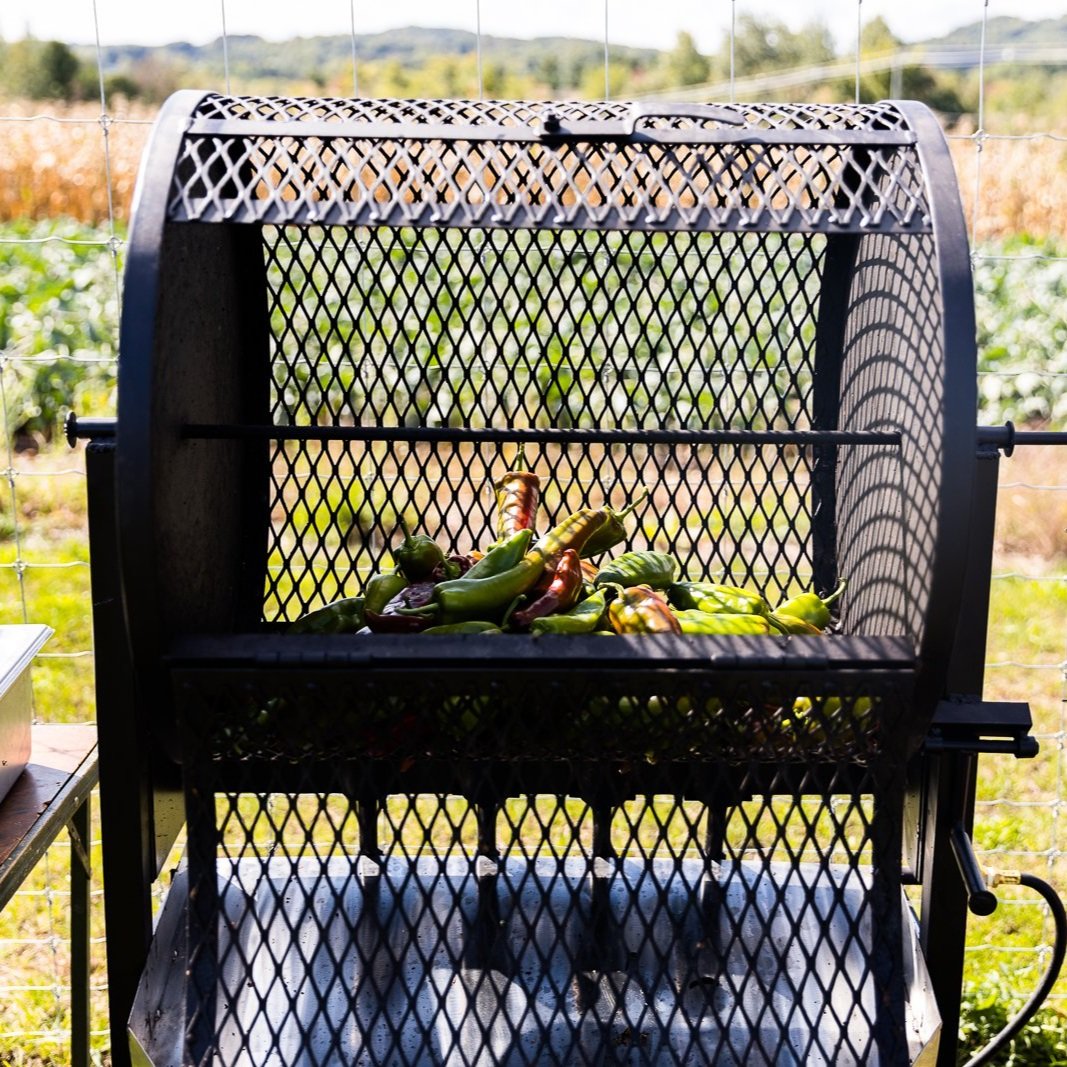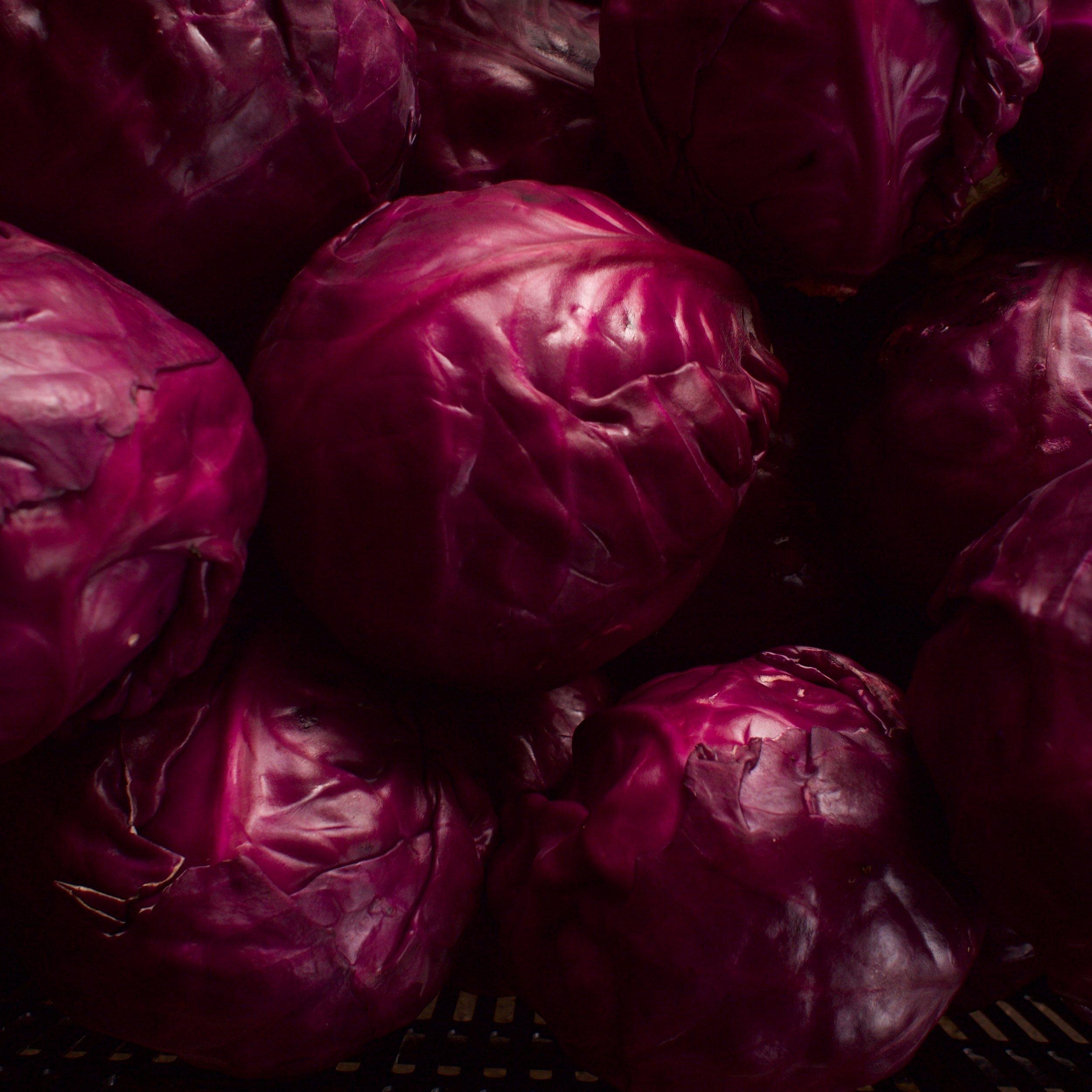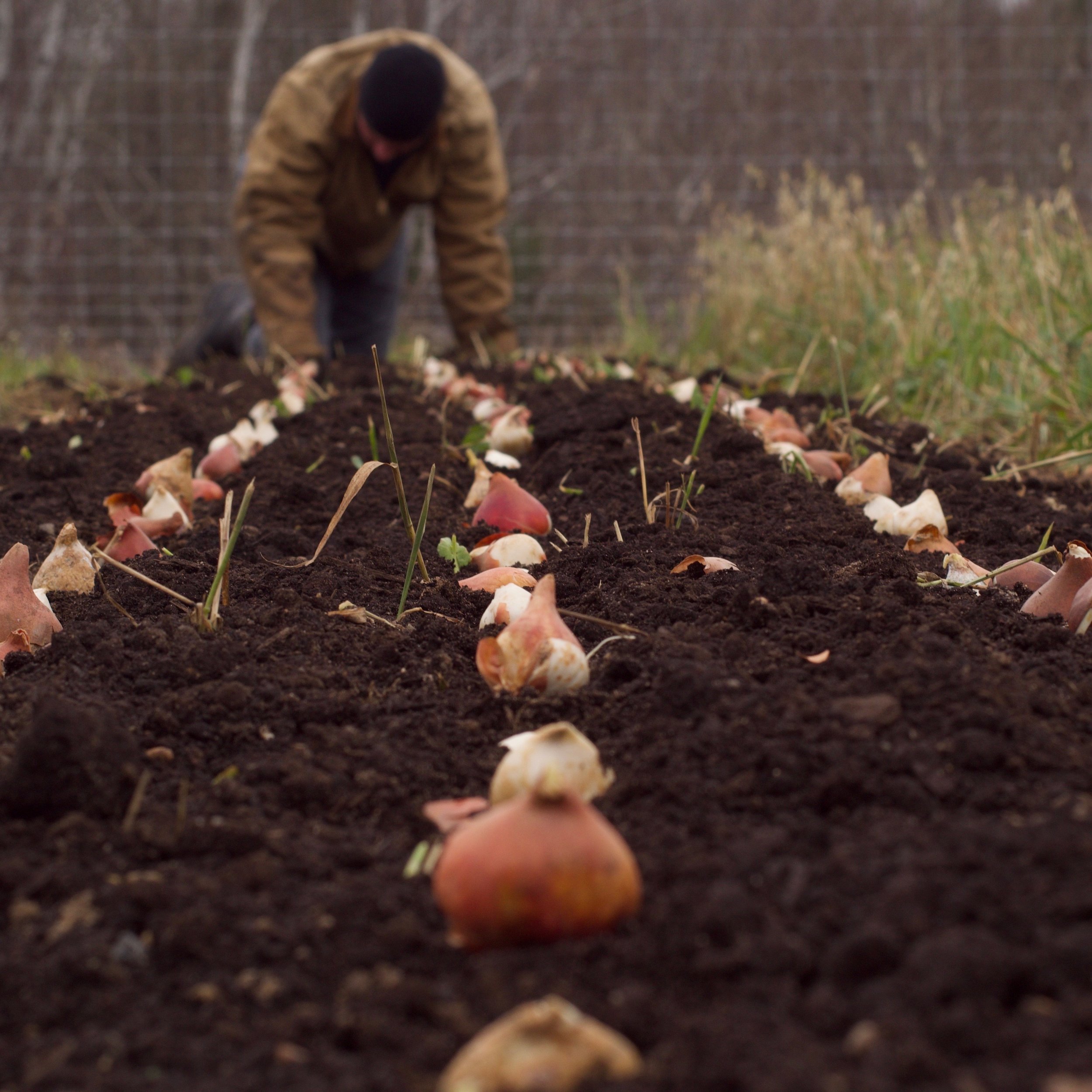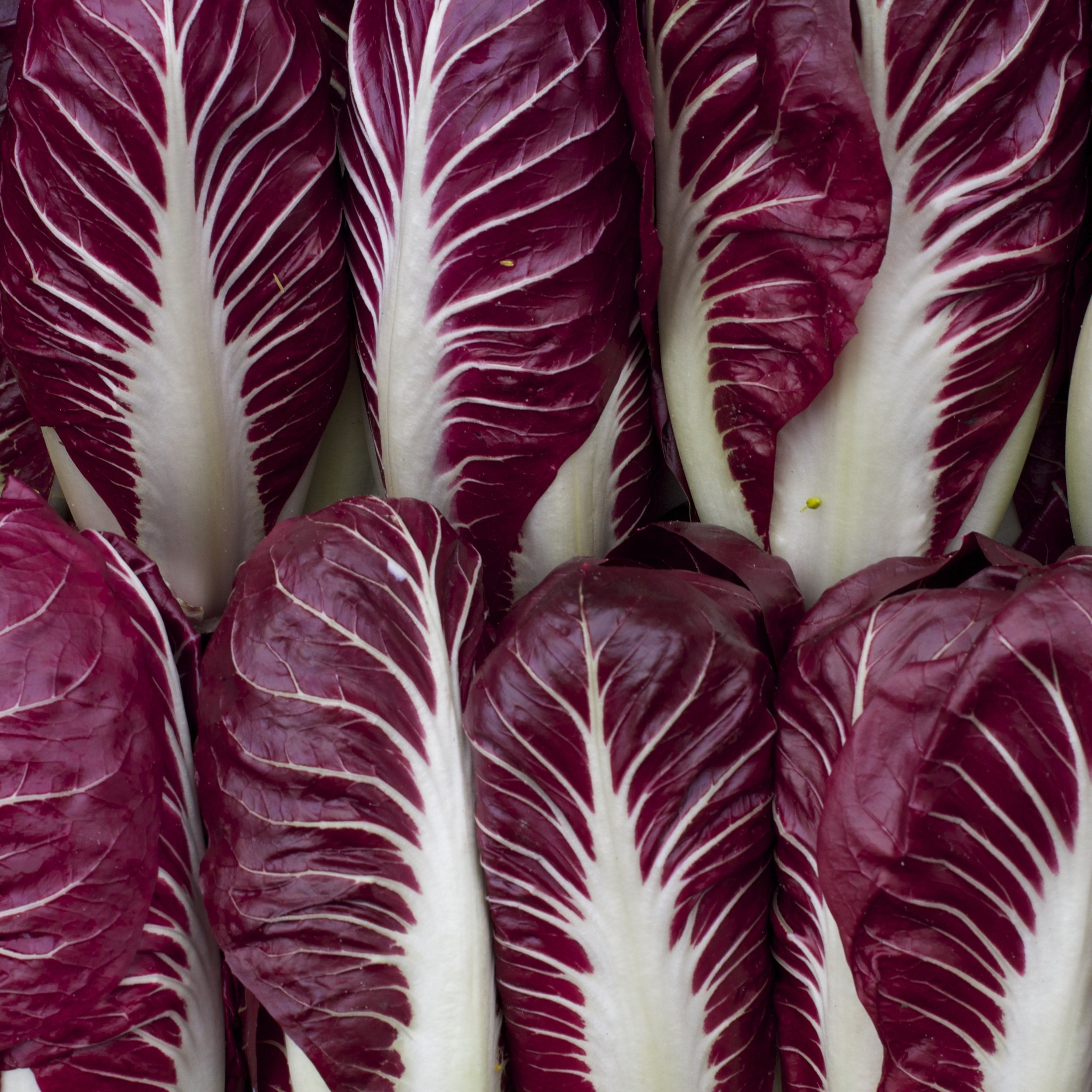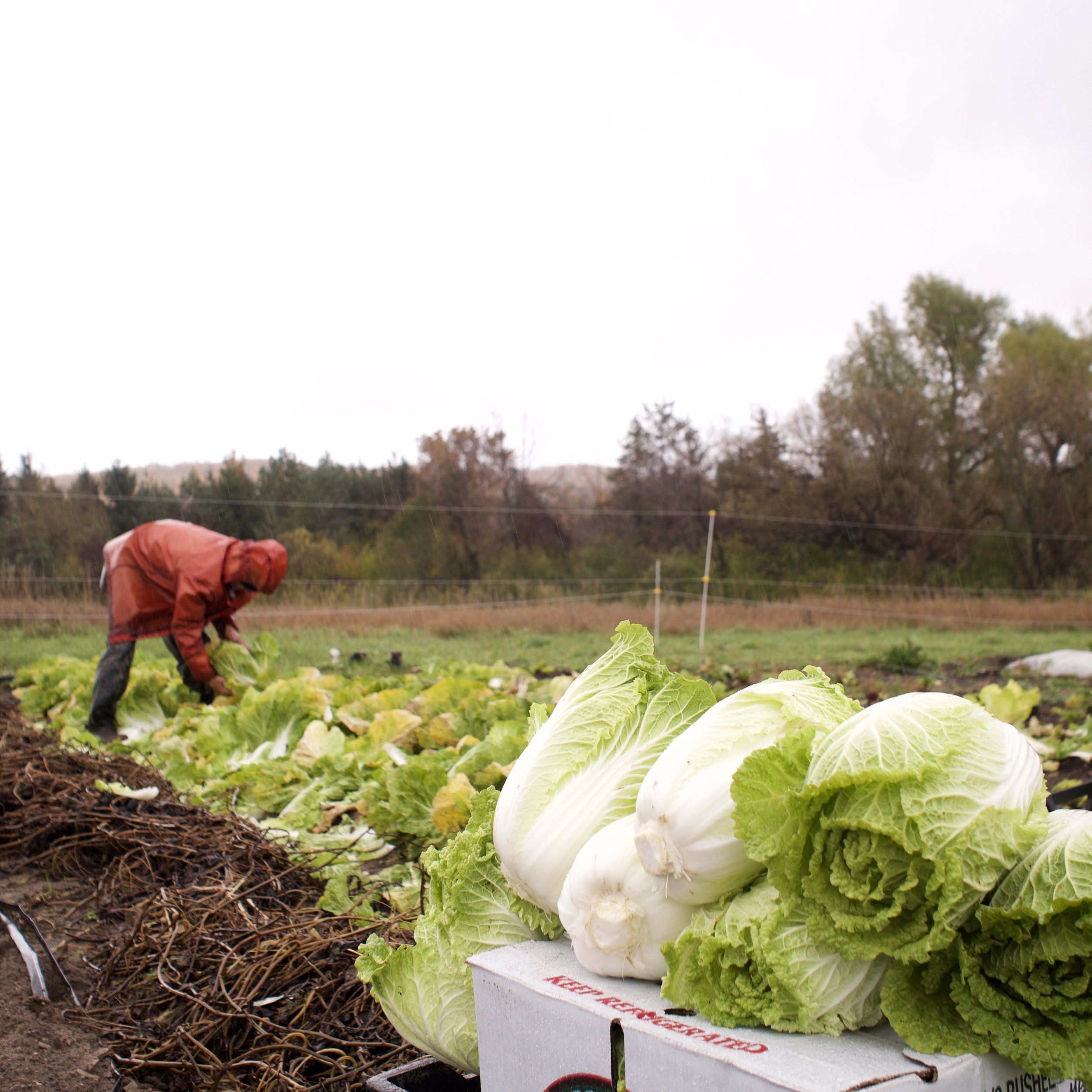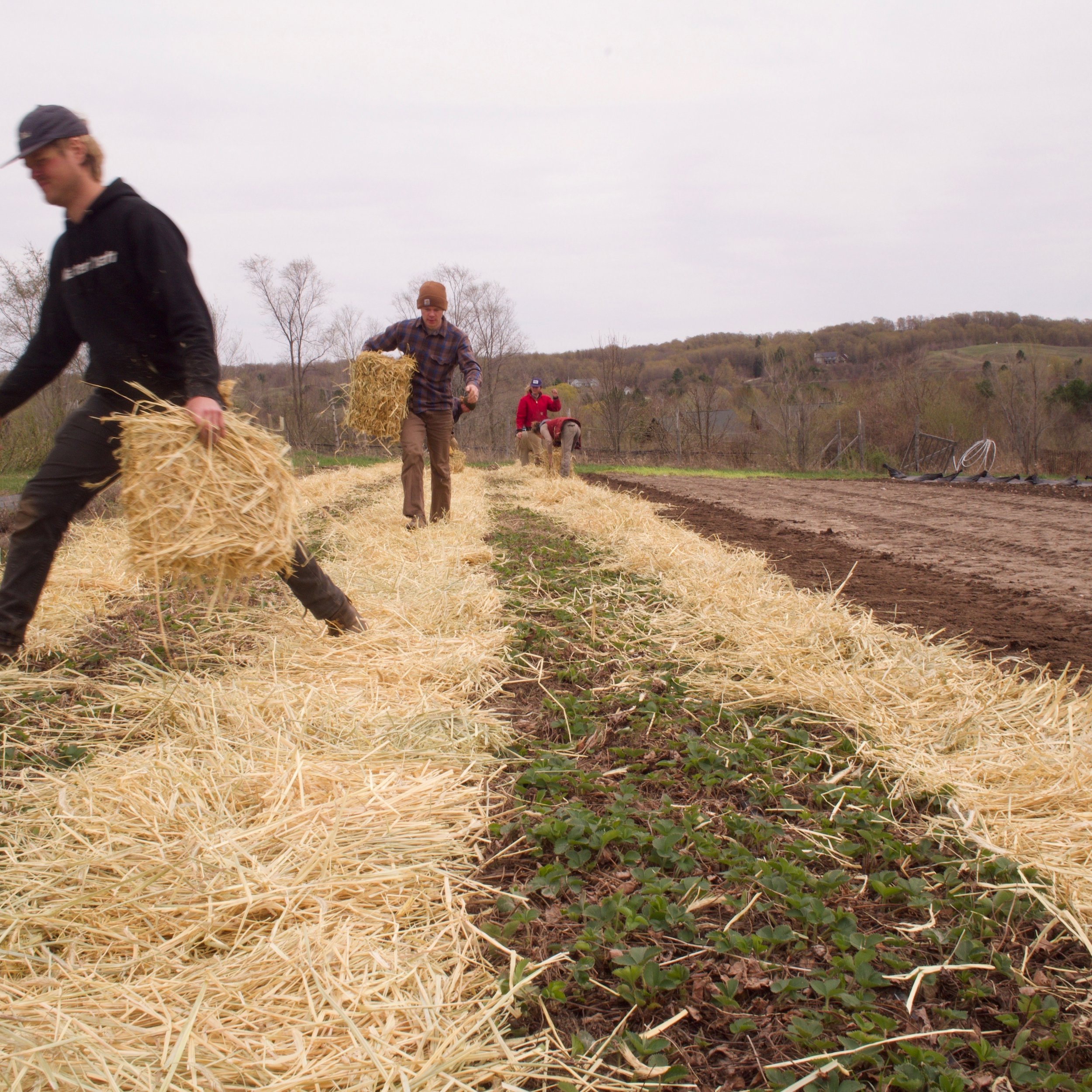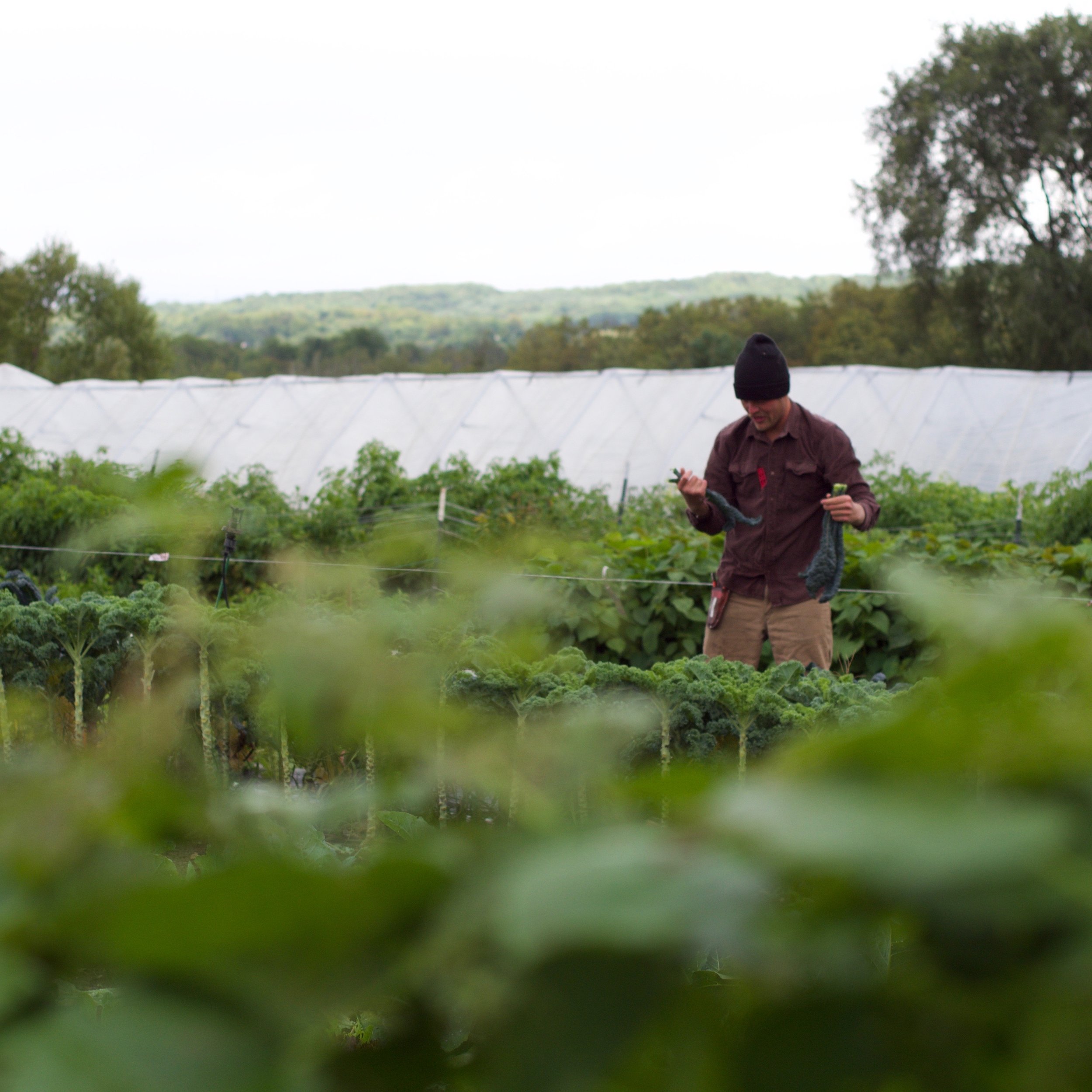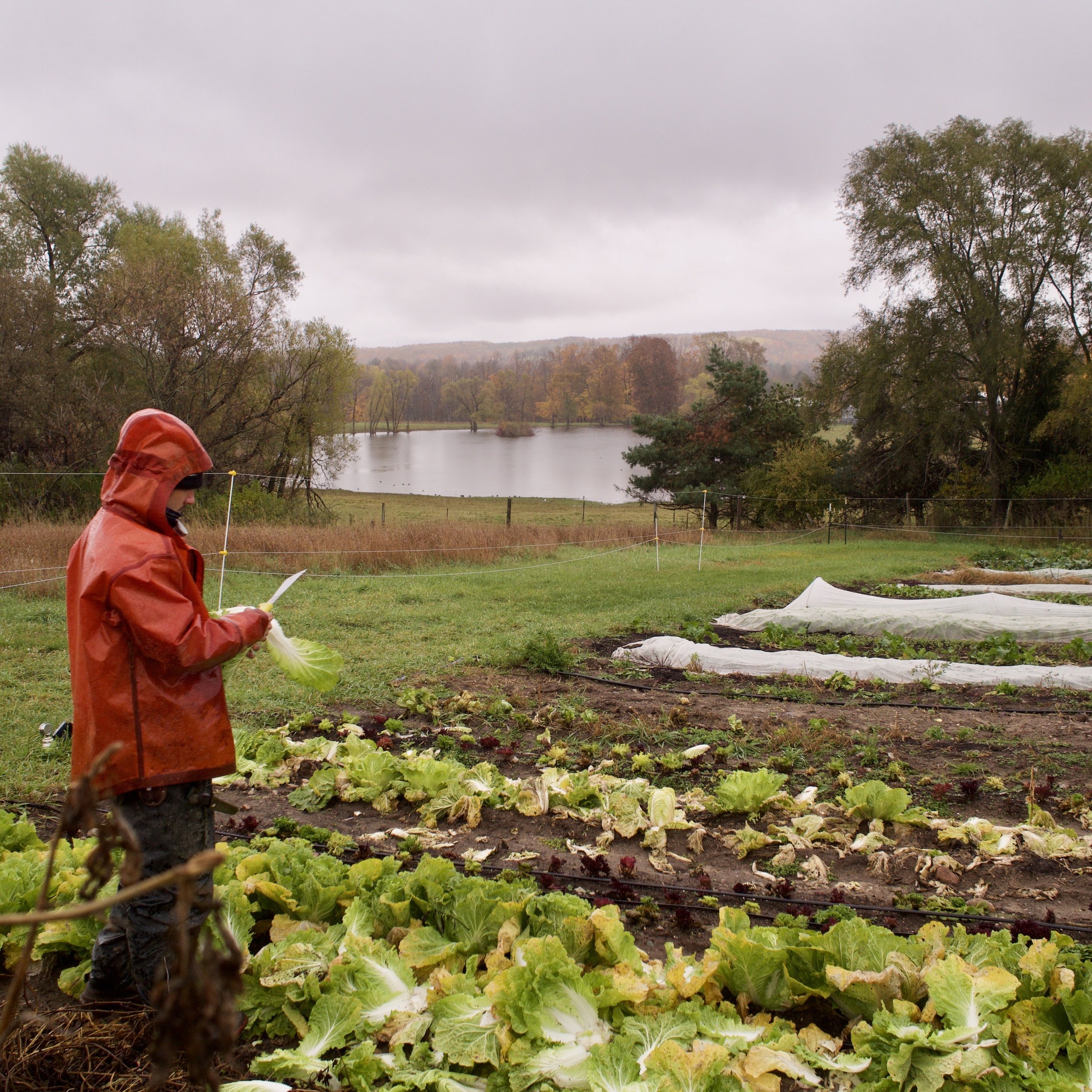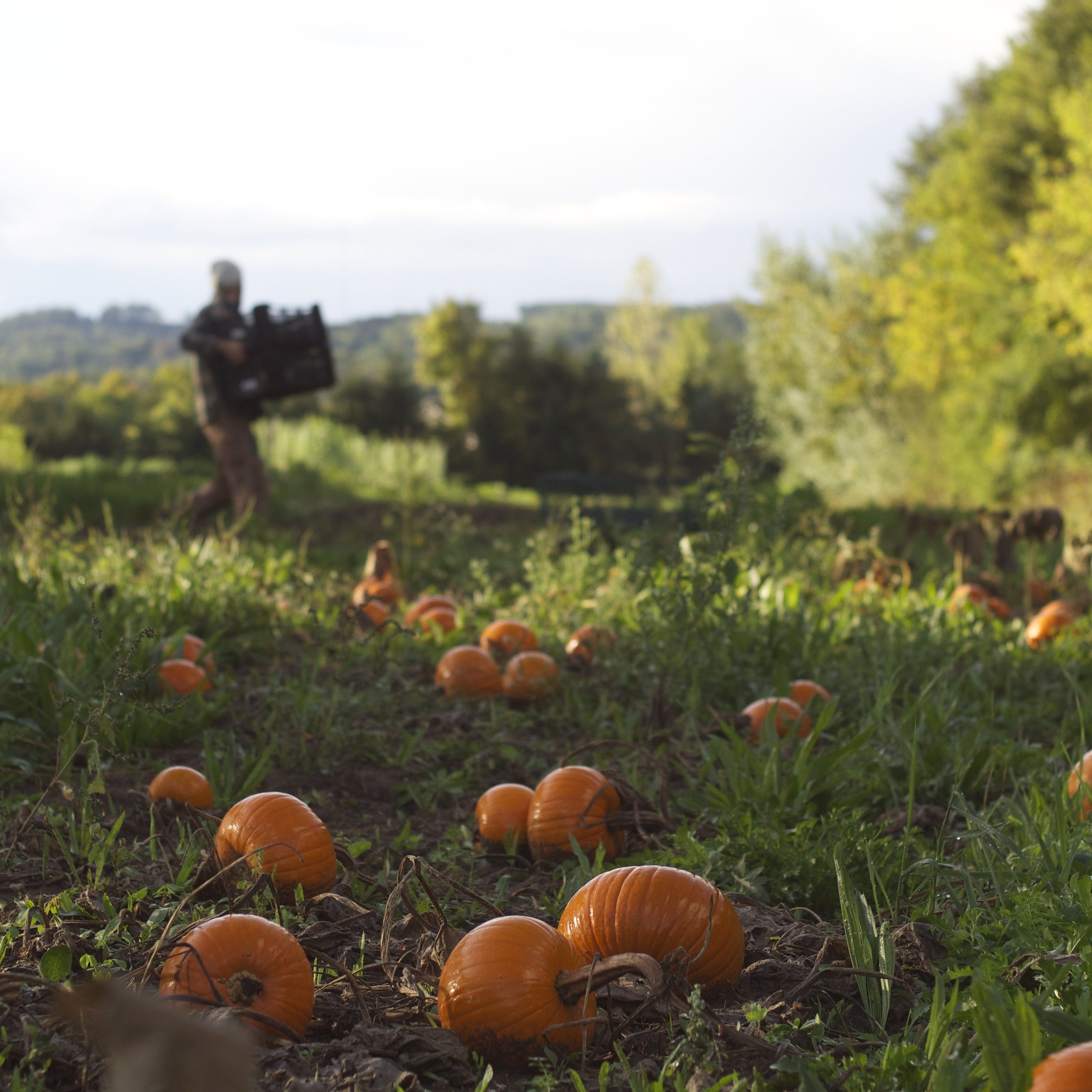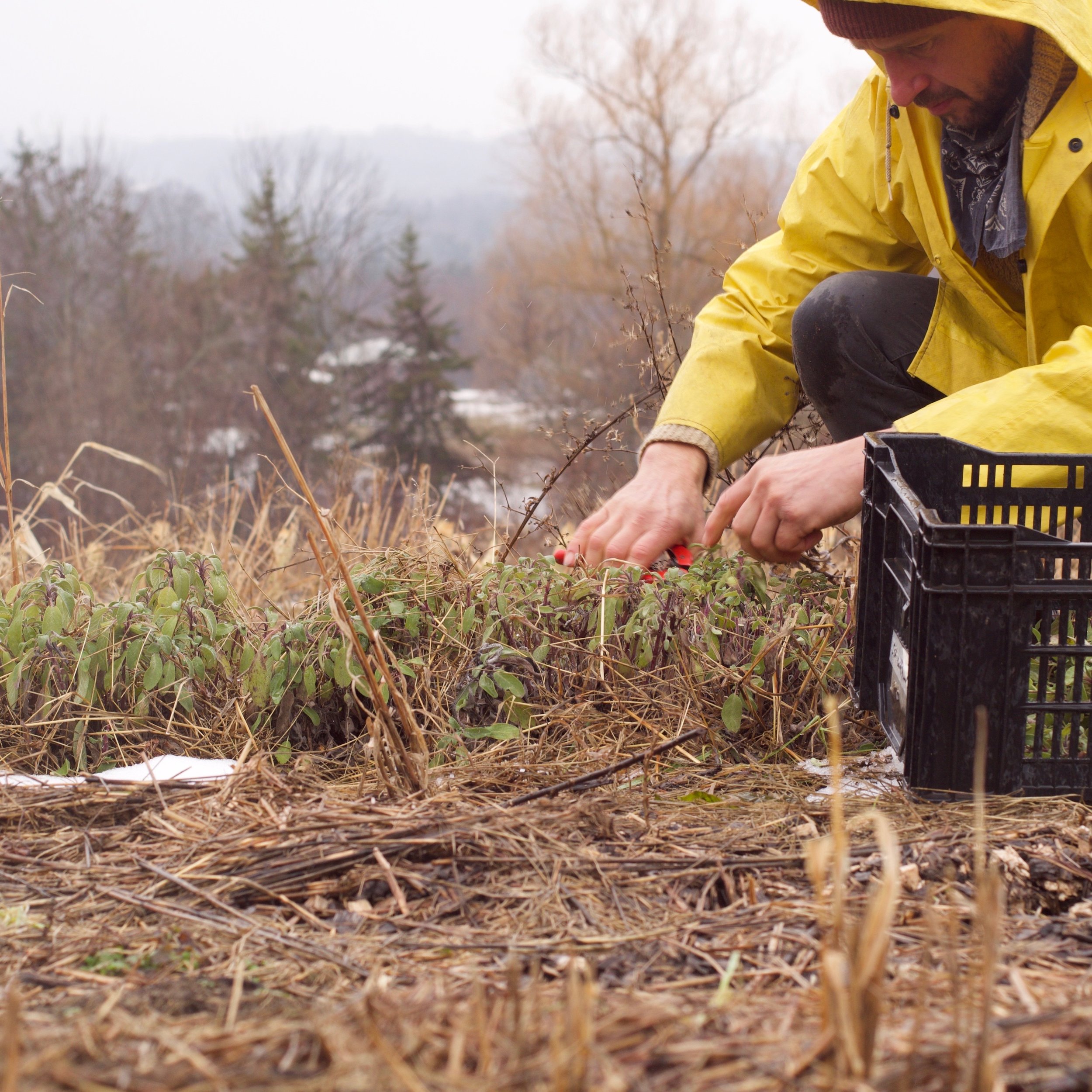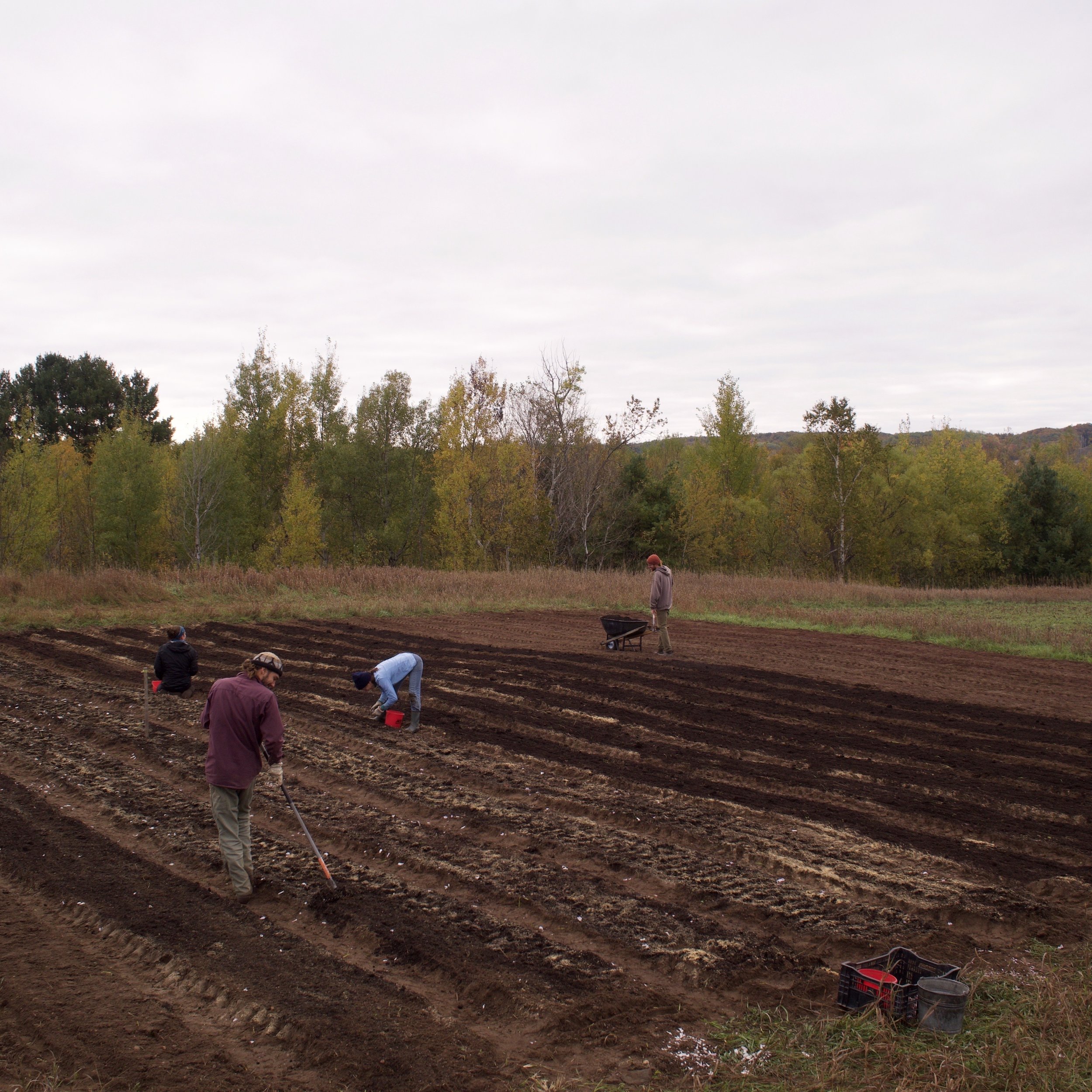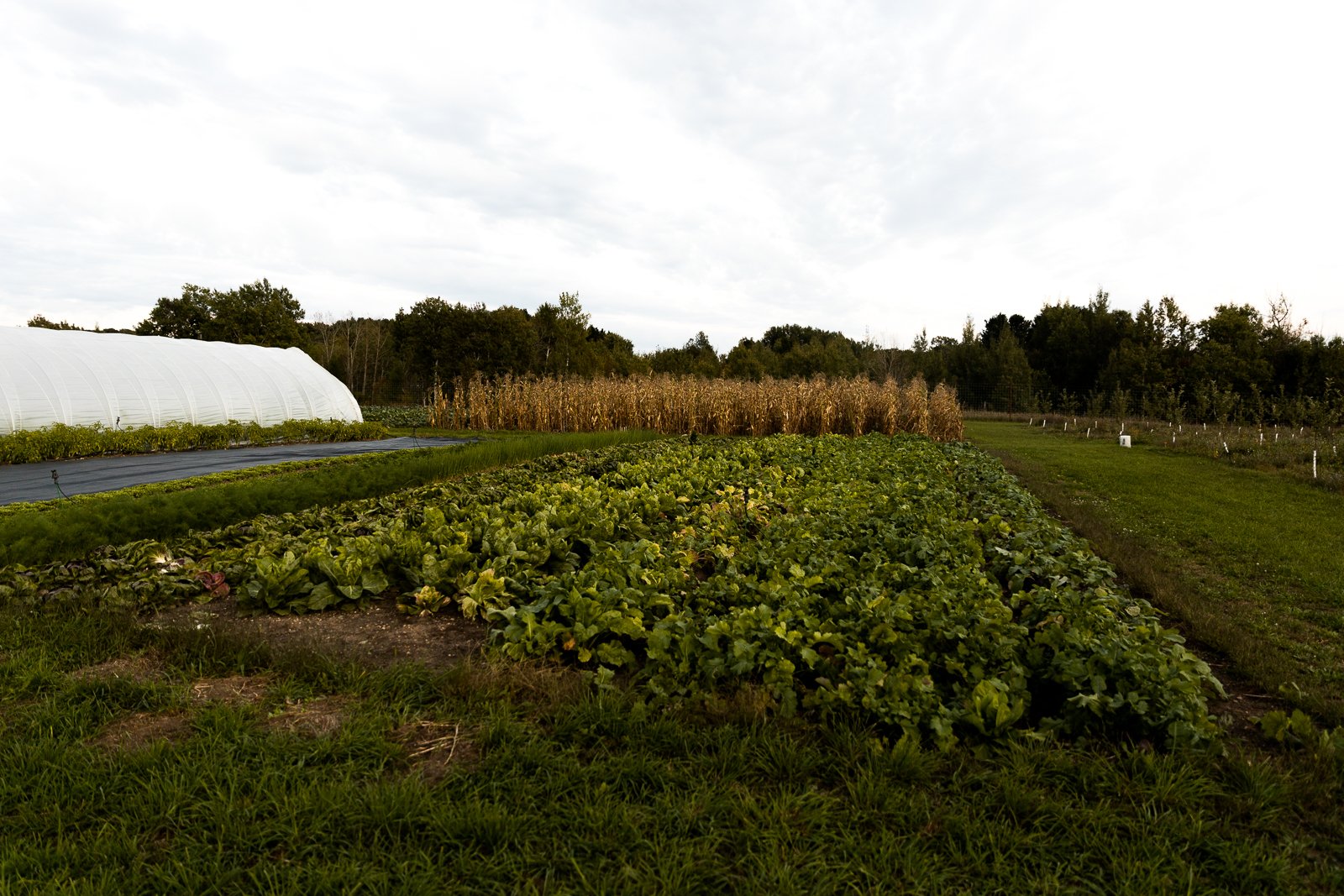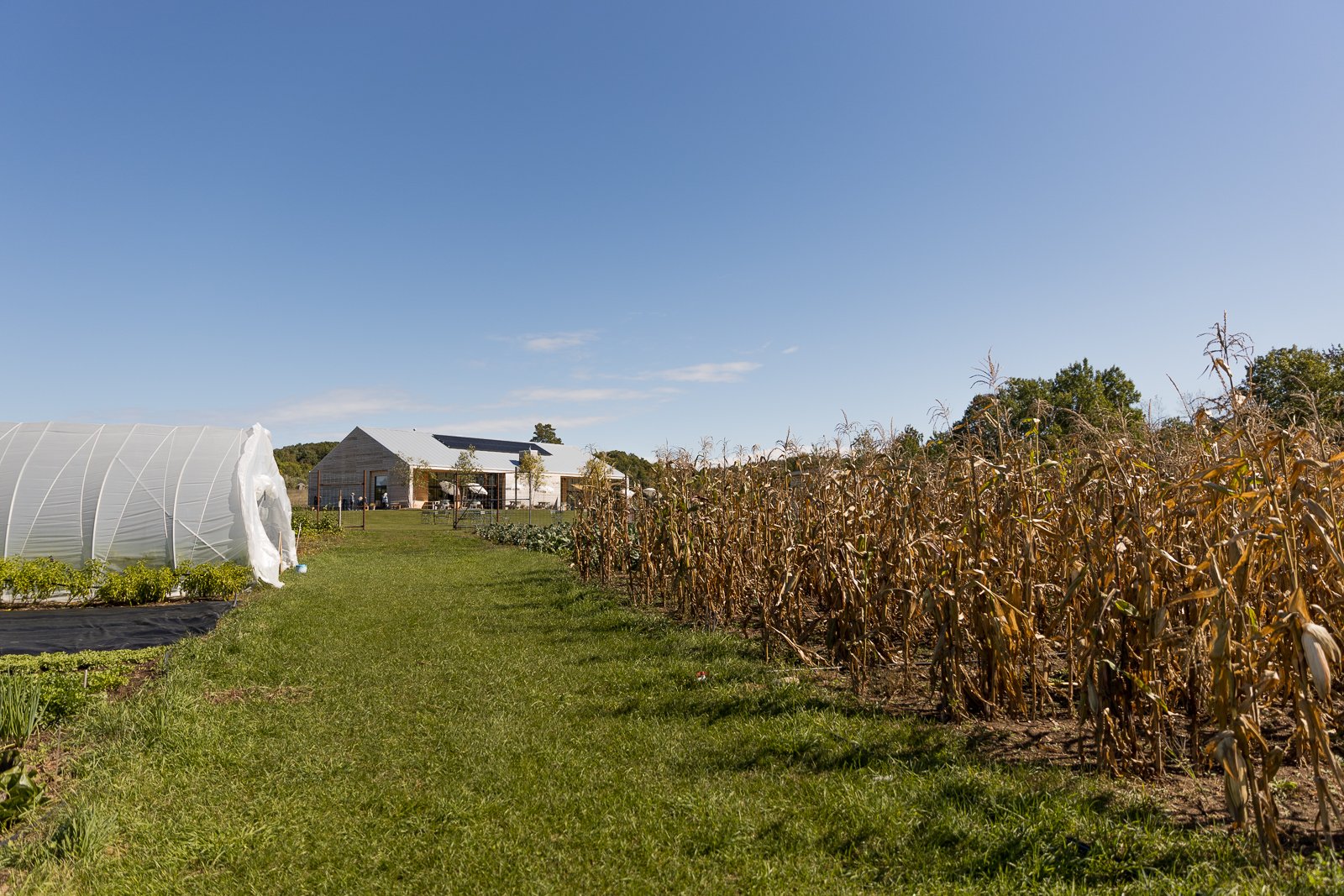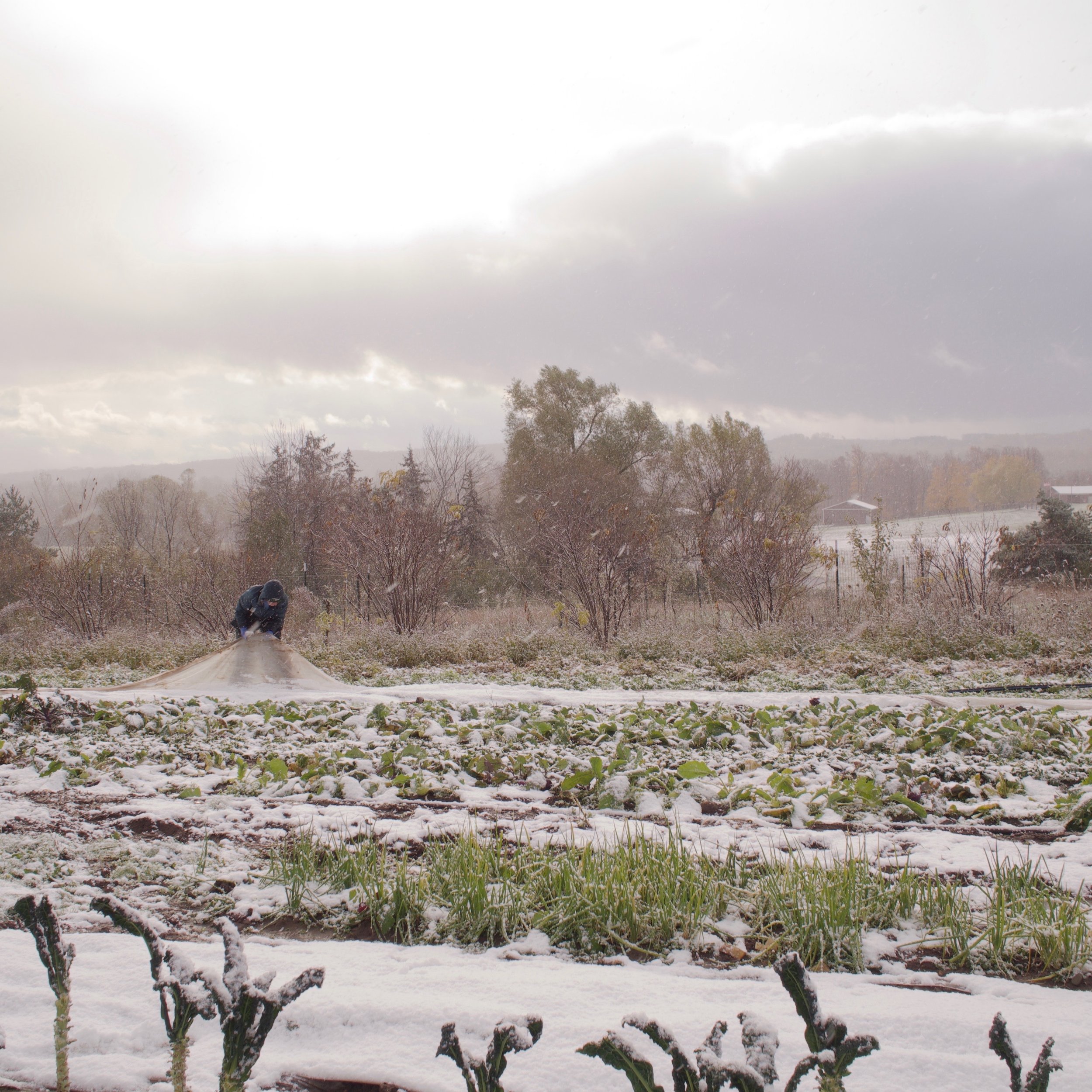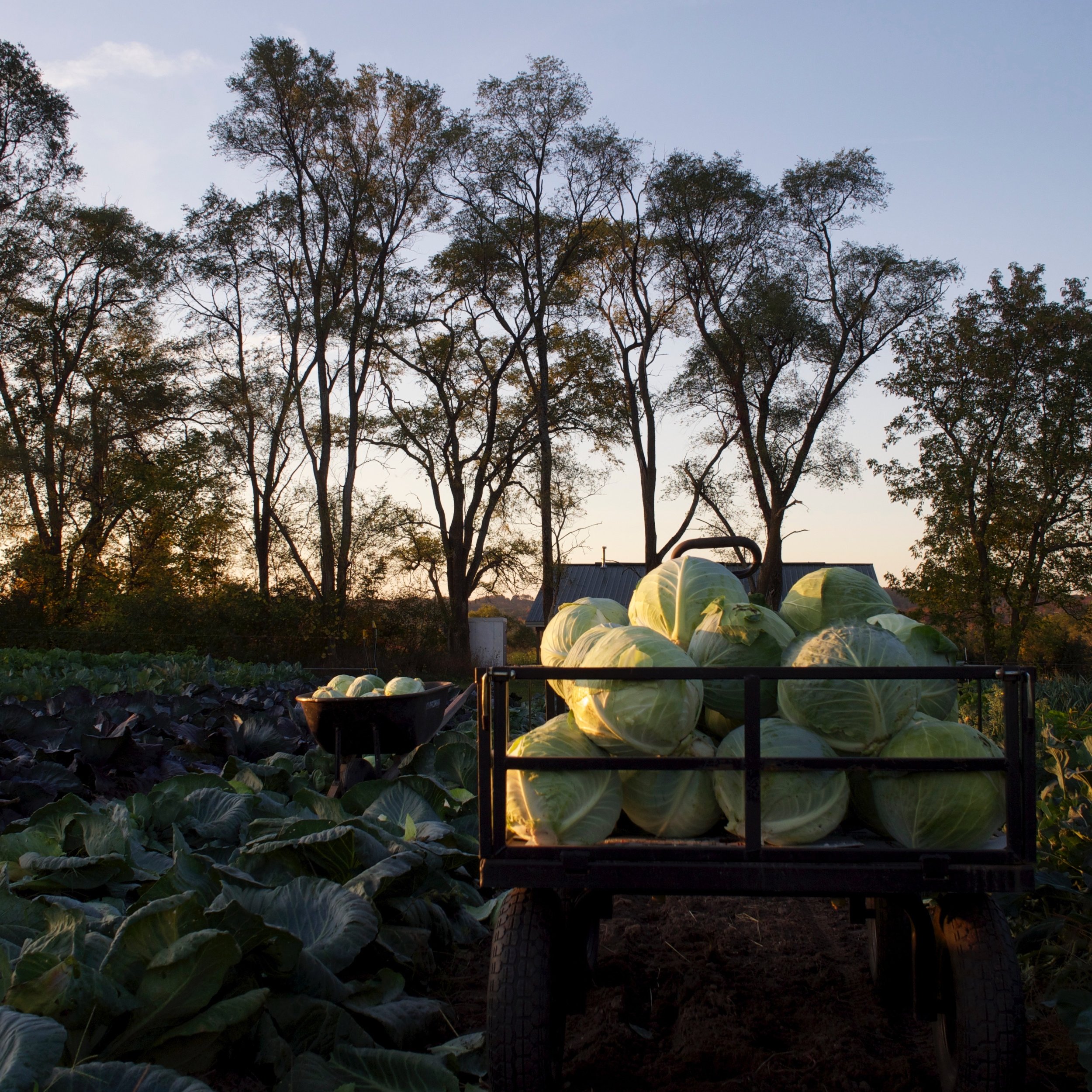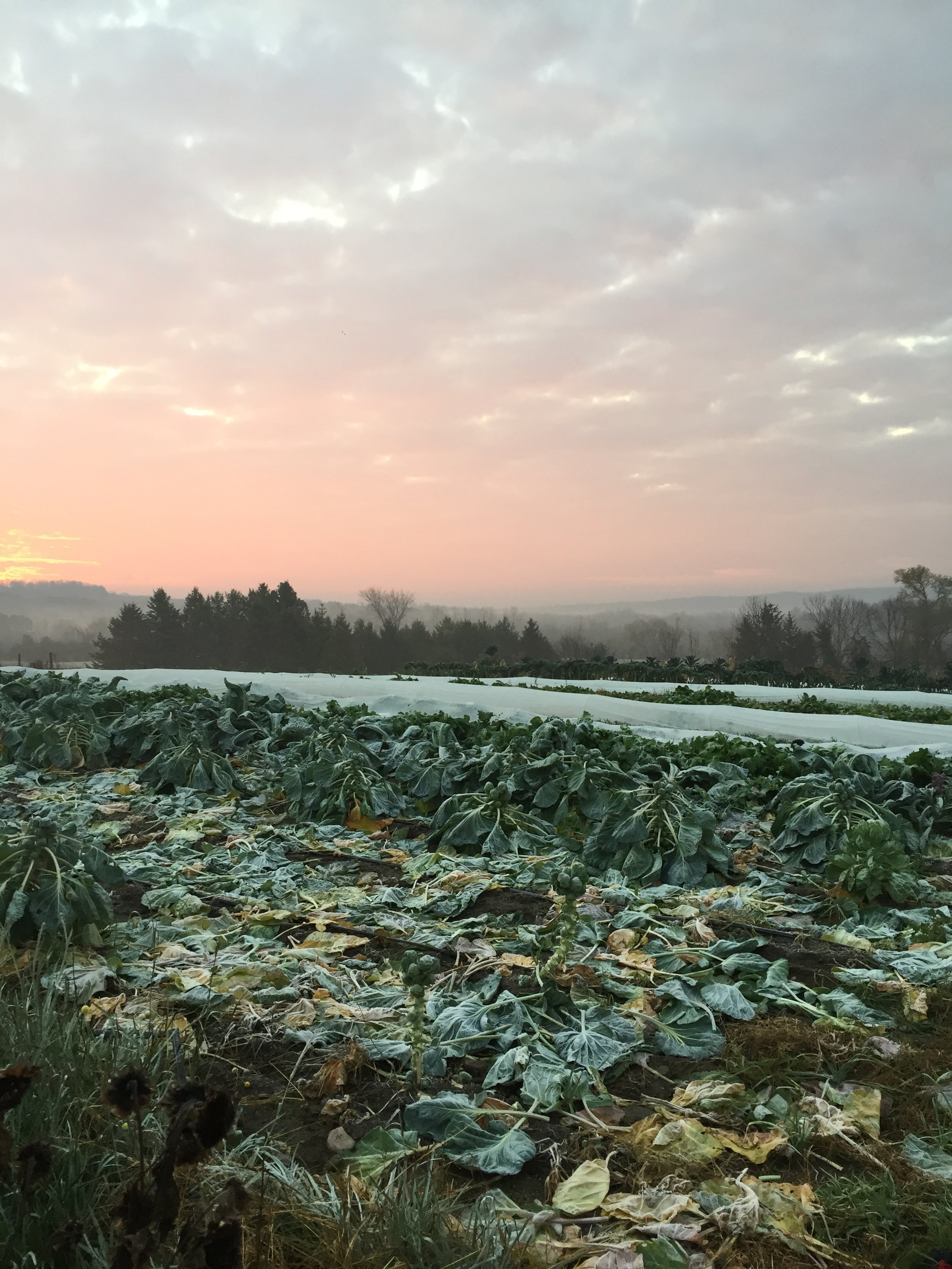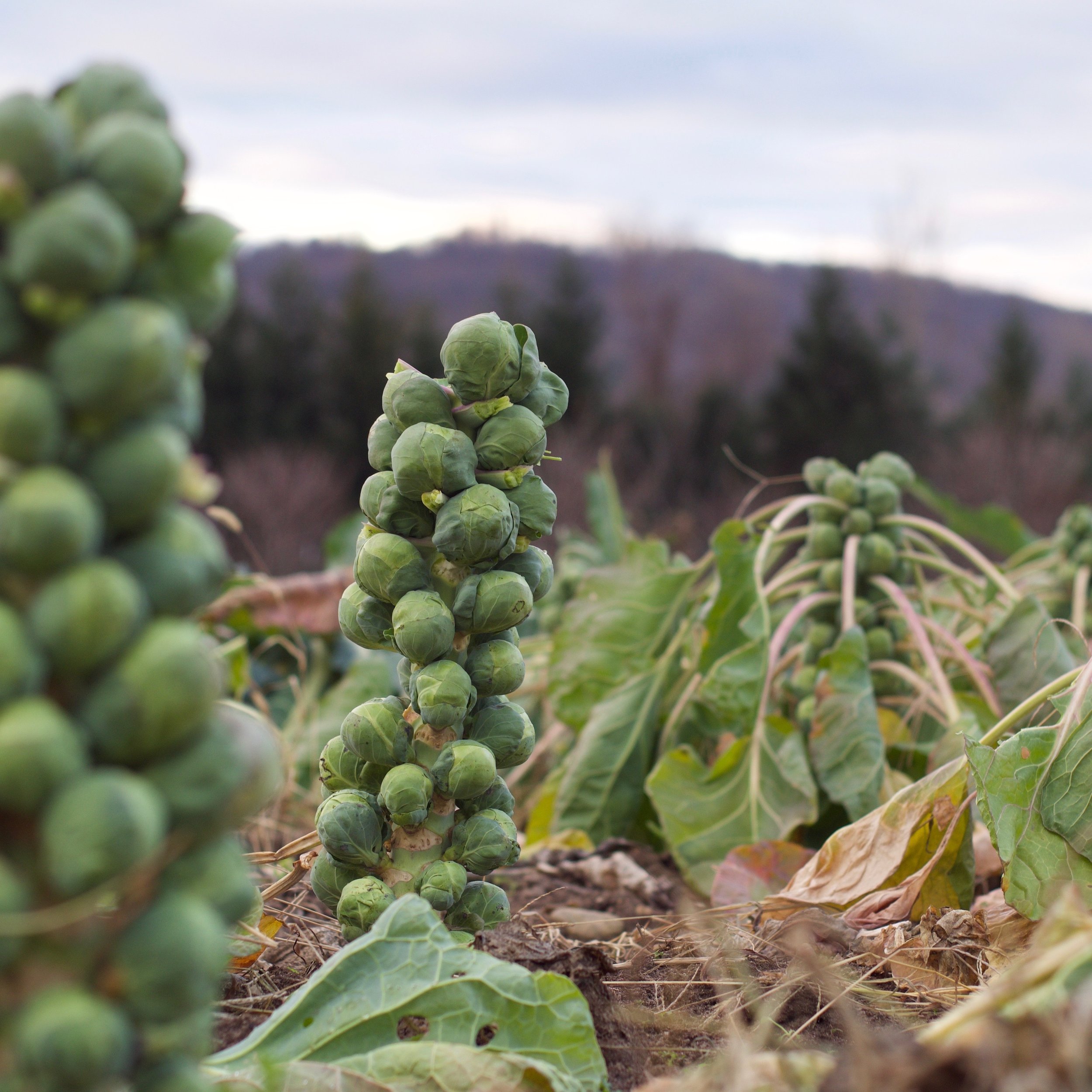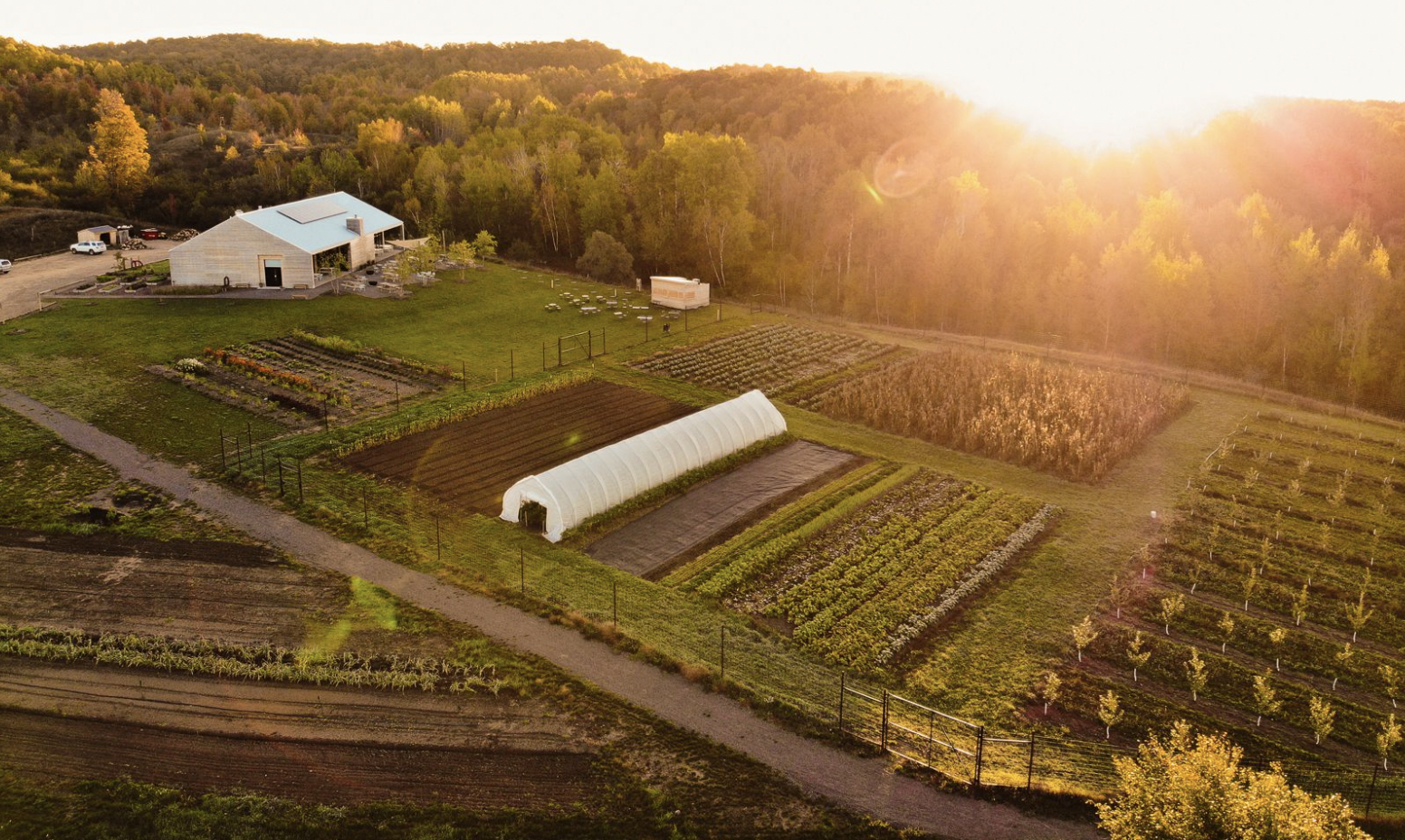
We farm on 2 acres at Farm Club and an additional 7-8 acres down the road at our main farm, Loma Farm. We follow organic practices with a deep concern for the health of the land and a love of high quality produce.
The vast majority of the vegetables and herbs in our market and on our menu are grown by us even in the heart of winter. This is a huge effort all in the spirit of living the good life: quality food and drink, embracing the beauty in nature, and being a community hub of good eating and careful farming.
In addition to growing for our own menu, brewery and market, we supply other area restaurants with vegetables and distribute weekly through our CSA veggie subscriptions . Check out what veggies are currently in the market.
The seasonality of the farm guides everything we do. Each season brings something new to celebrate.
Spring
Spring is challenging for fresh produce, much more so than winter. In early and mid-winter we are still living in the wake of the summer and fall veggie bonanza, but by late March when the storage turnips are wrinkly and the taters have begun to sprout and outside the trees are still naked; this is when we have to cinch our belt buckles and get creative with the menu.
As challenging as Spring is, it is also a celebration of diversity on the farm - the first chives poke through the snow, sorrel and dandelion greens nurture the post winter scurvy, the first dainty precious radishes, the sweetest Japanese turnips, the snappiest freshly dug overwintered carrots, the greenest spinach, the finest arugula. Spring, ephemeral and leafy, has much to celebrate.
Summer
By summer our backs are strong and our hats are large. It is The Big Push. The harvest is multiplying by the second, we are bringing in a cowshed full of produce many times per week.
Summer is also still in the height of the planting season, dubbed by Eliott Coleman the “second spring”. This is the time to plant late fall crops like cauliflower, brussels sprouts, chicories, favas, cabbage, roots and the like. And to top it all off the summer weeds stage their annual coup d’etat and they enlist the cucumber beetles and stink bugs to back them up. Everything must be done now - planting, seeding, weeding, soil prep, composting, pest management, harvesting and equipment maintenance.
Summer is nothing short of a frenzy. Everything is buzzing and reproducing. With 16 hours of daylight at the peak of the solstice it really is a marvel to see how much growth can happen in a single day.
Fall
The vegetable tsunami, an apogee of abundance, fall is everything you could ever desire: carrots, beets, roasted chile peppers, butternut squash, fingerling taters. Too many crops to list, too many tons to count. The abundance of autumn is an embarrassment of riches. Though the season’s work is far from done, fall brings a sigh of relief. We made it! Success! The crops have grown, yet again. The world works if we let it.
Winter
To have fresh produce in the cold months is a year round effort. Veggies are stored fresh in the coolers and in make-shift straw bale huts in the barn. Peppers, herbs, tomatoes and other crops are all dried for winter keeping. We pickle, ferment and freeze; storing and preserving the bounty of summer to build the flavors of the winter menus. The greenhouse and unheated hoop-houses are packed full of hardy winter greens, herbs and roots including salad mix, arugula, spinach, mustard greens, kale, collards, parsley, cilantro and many more. Well over a hundred crops are stored for keeping us well fed and celebrating the harvest year-round.
The ballet of a winter farmer has an uncanny resemblance of a man in a snowsuit plucking spinach from frozen drifts. There is something primordial and satisfying, if not comical, about farming in a blizzard. Produce arriving on a truck would certainly be easier, but alas our resilience and our bonds come from learning to live within the means of our place.

